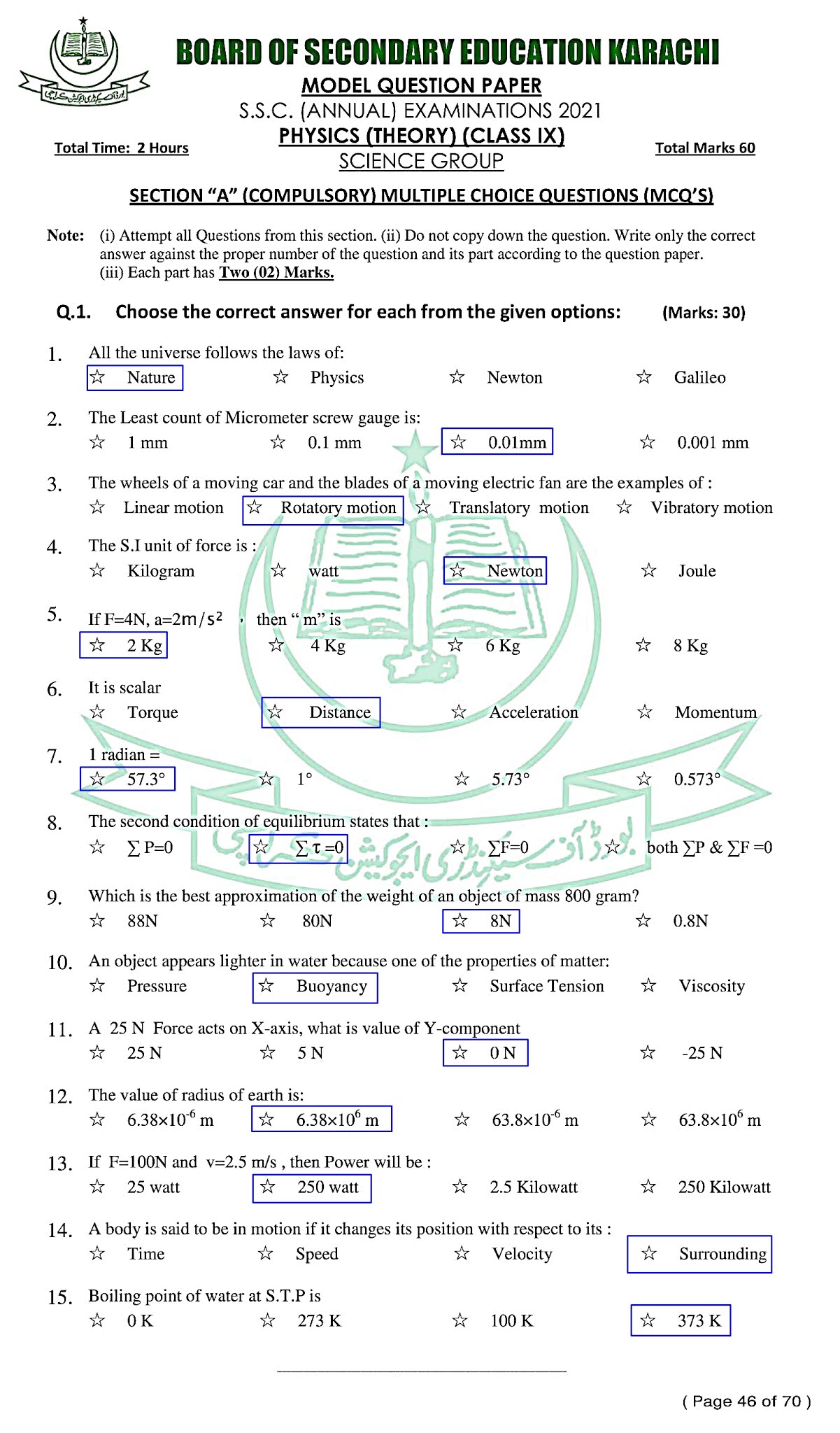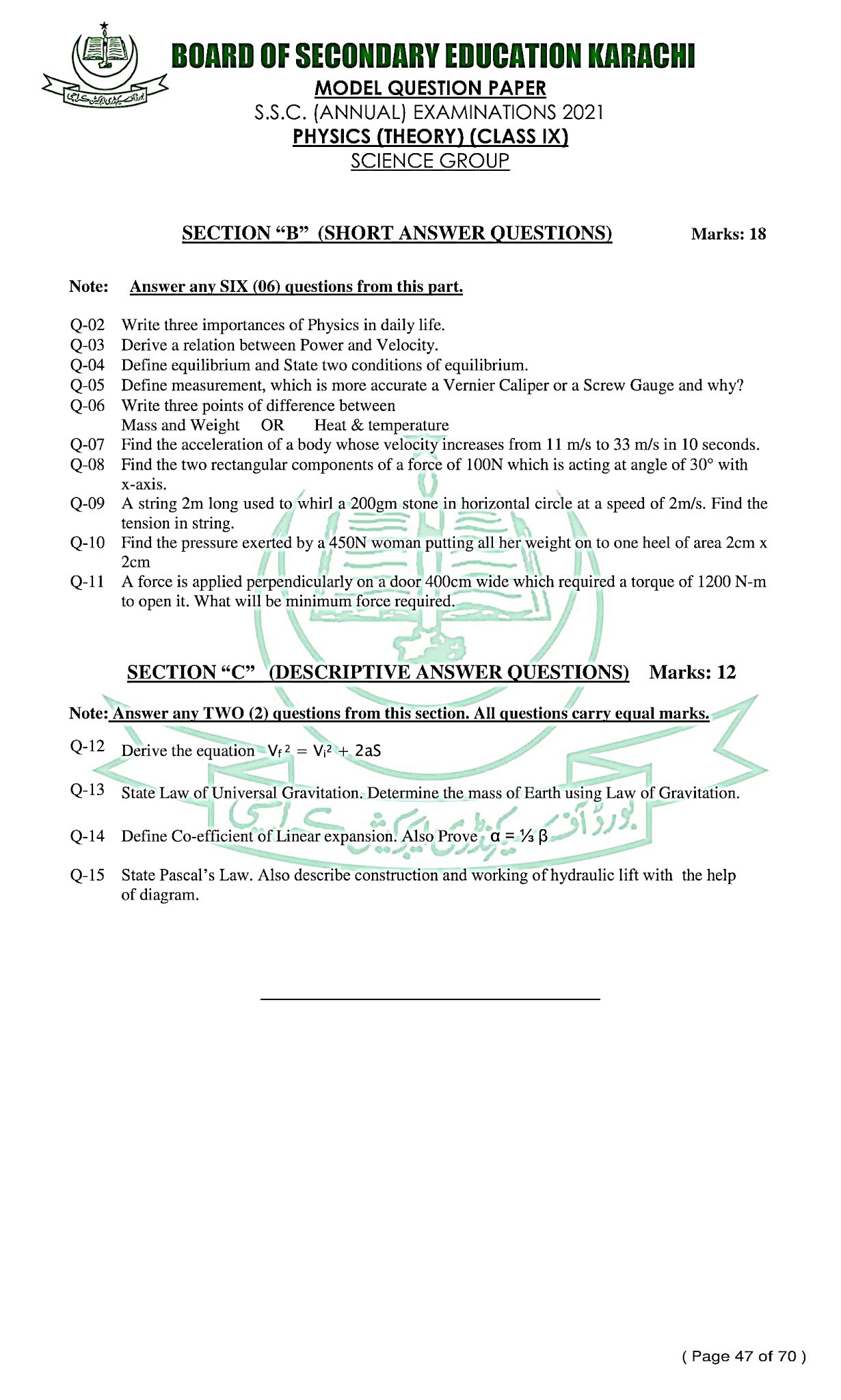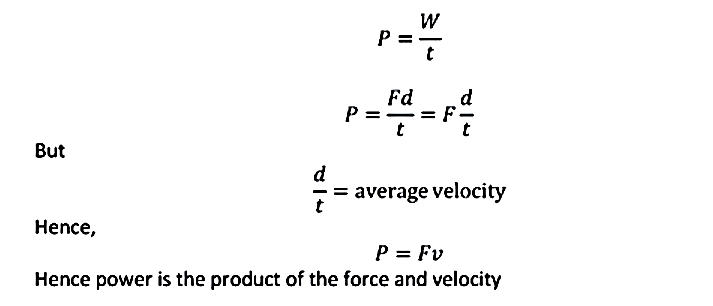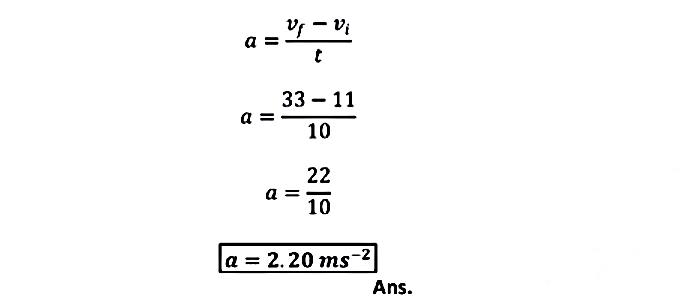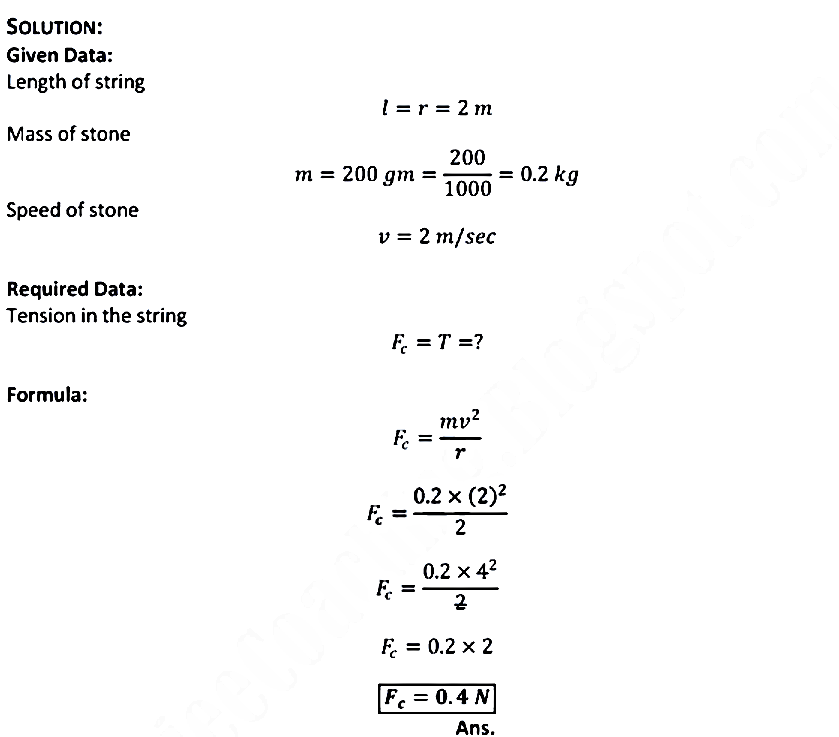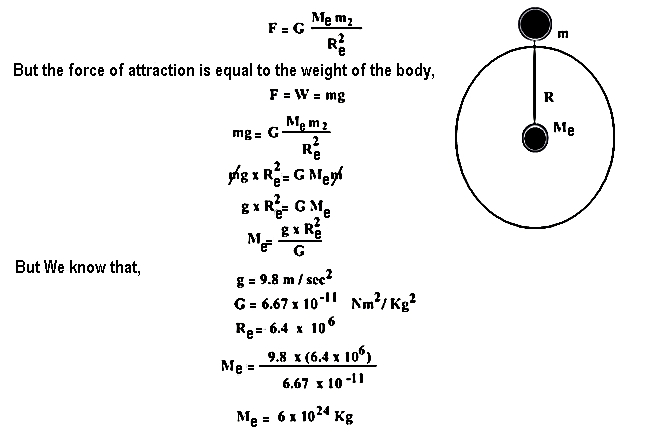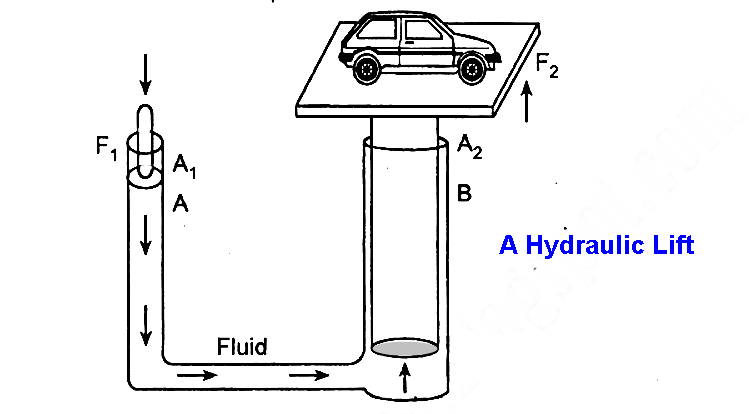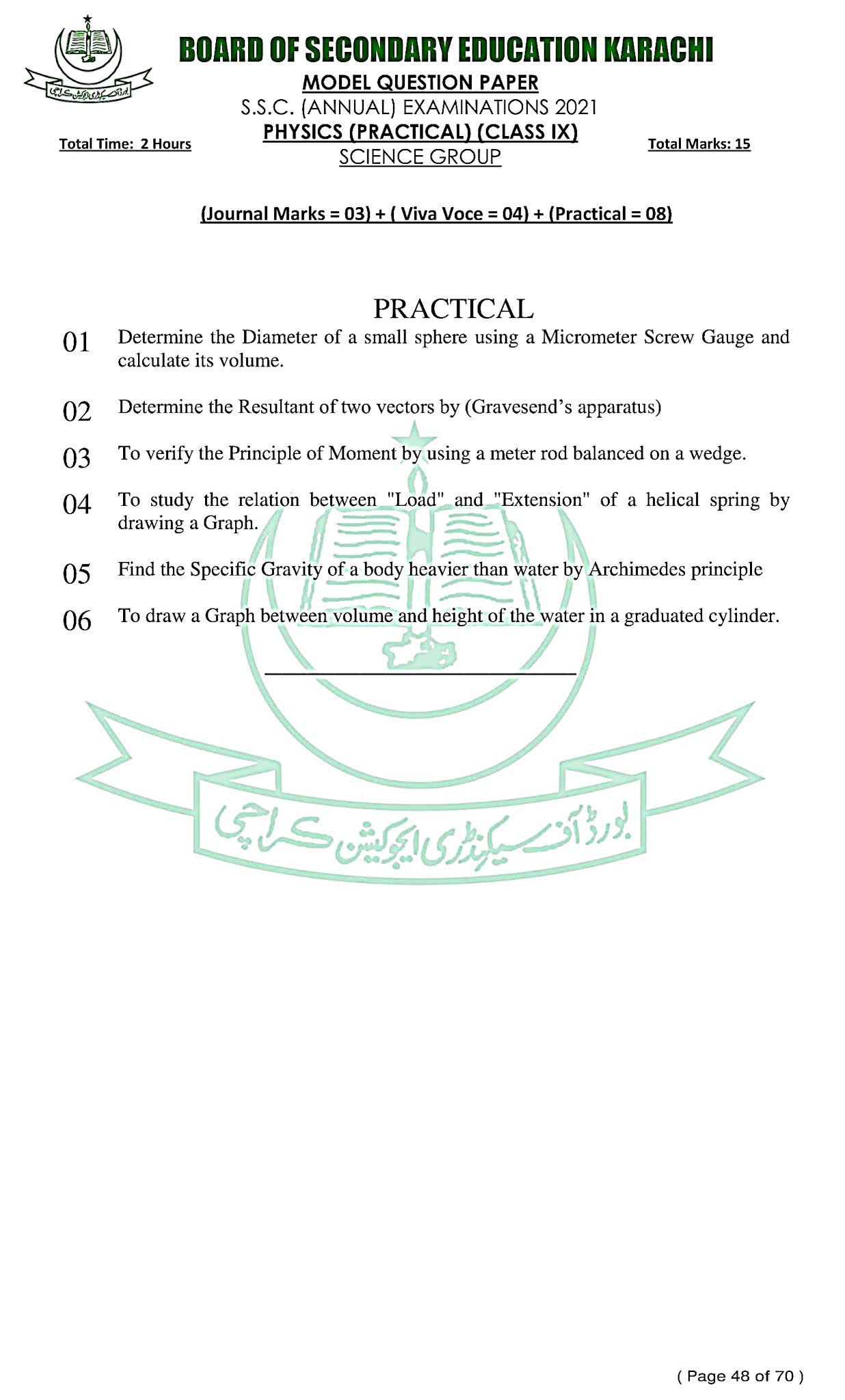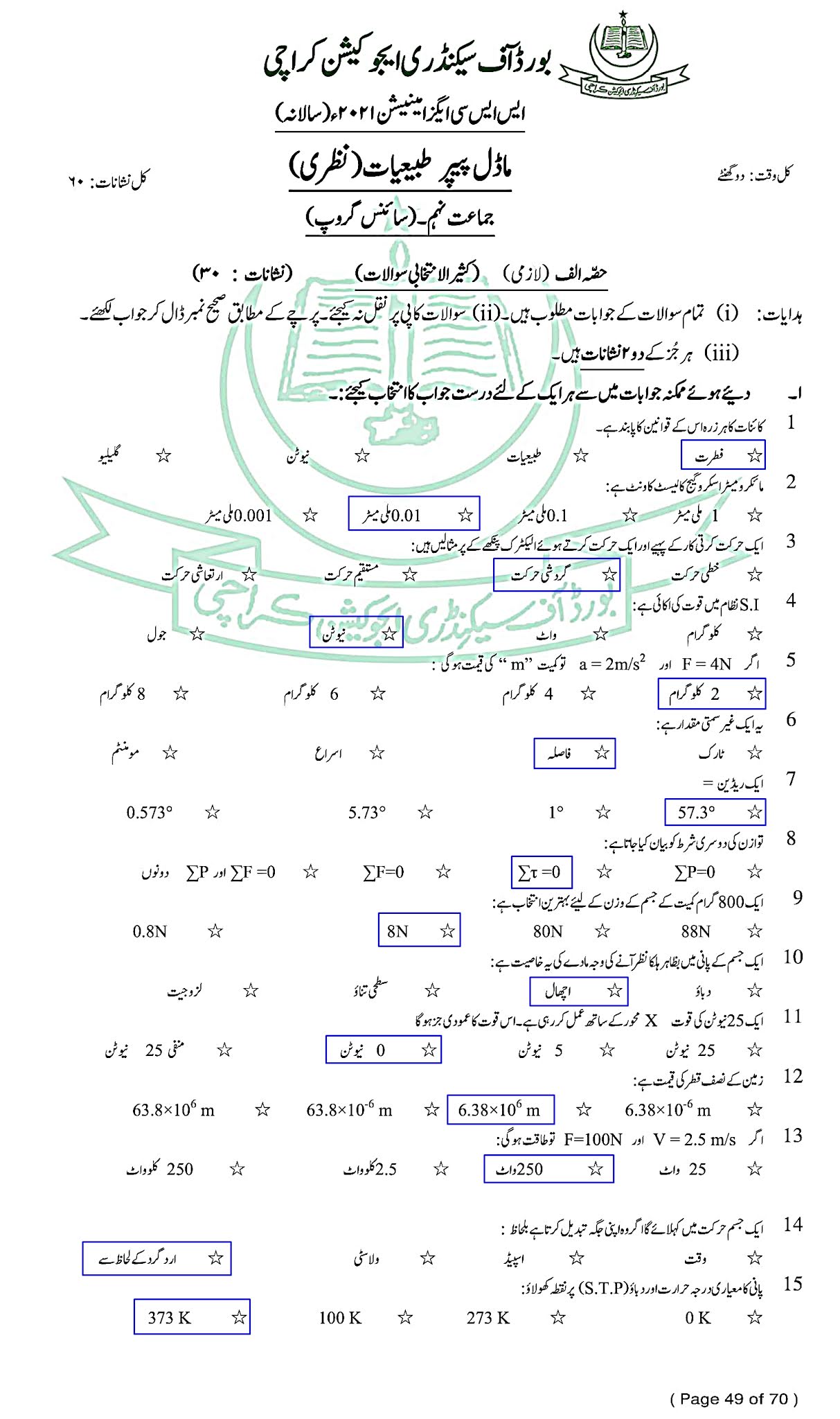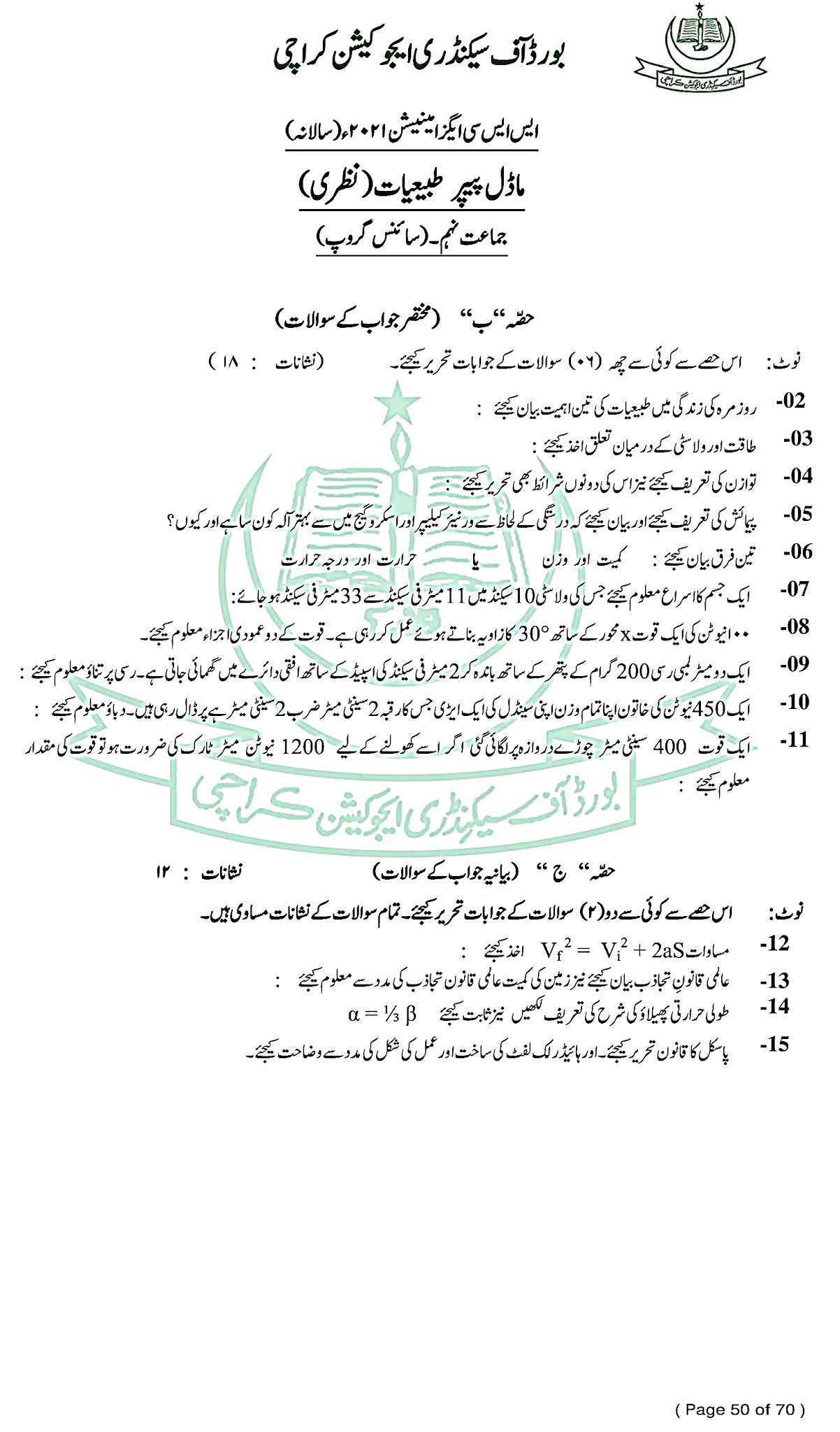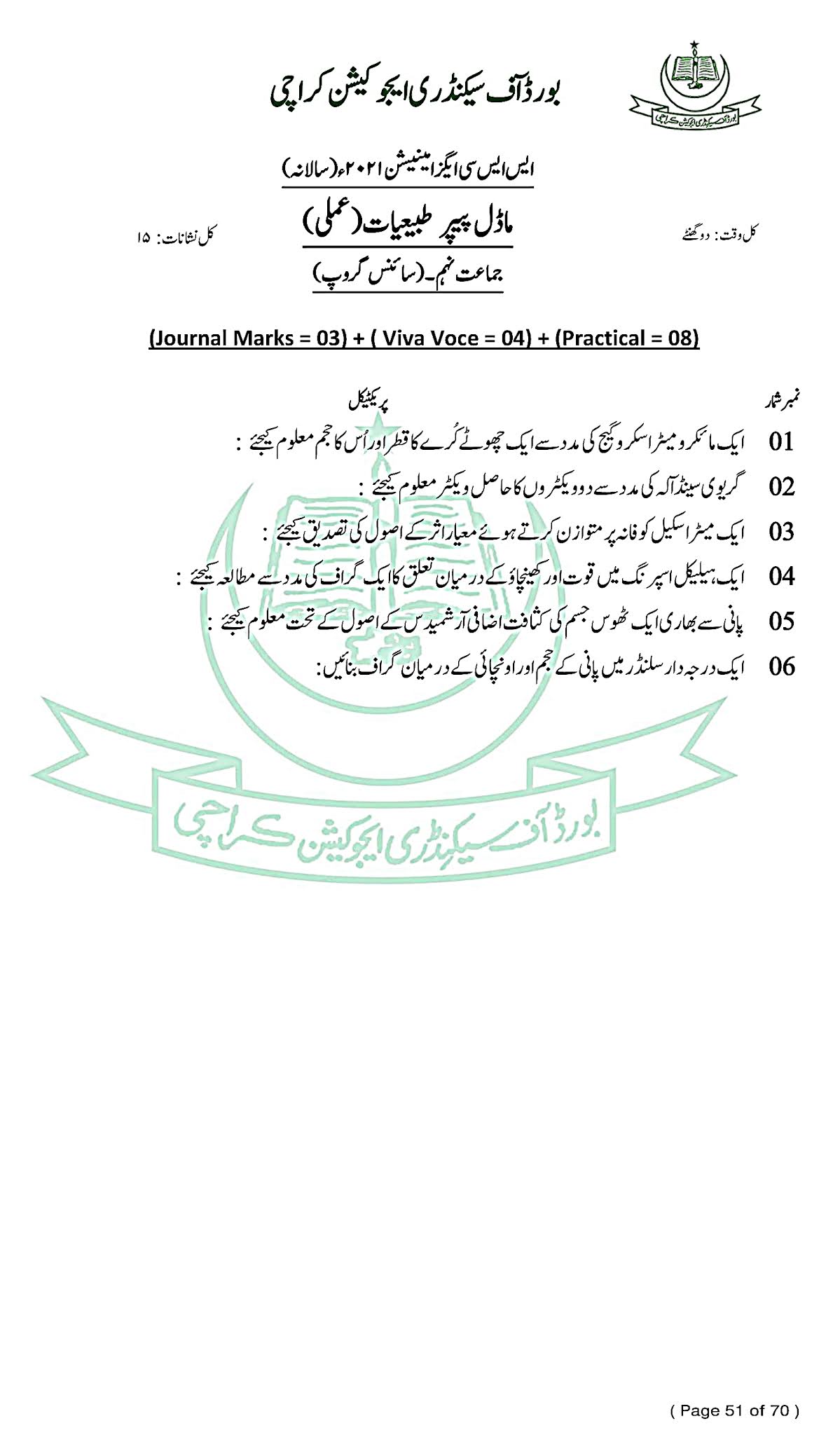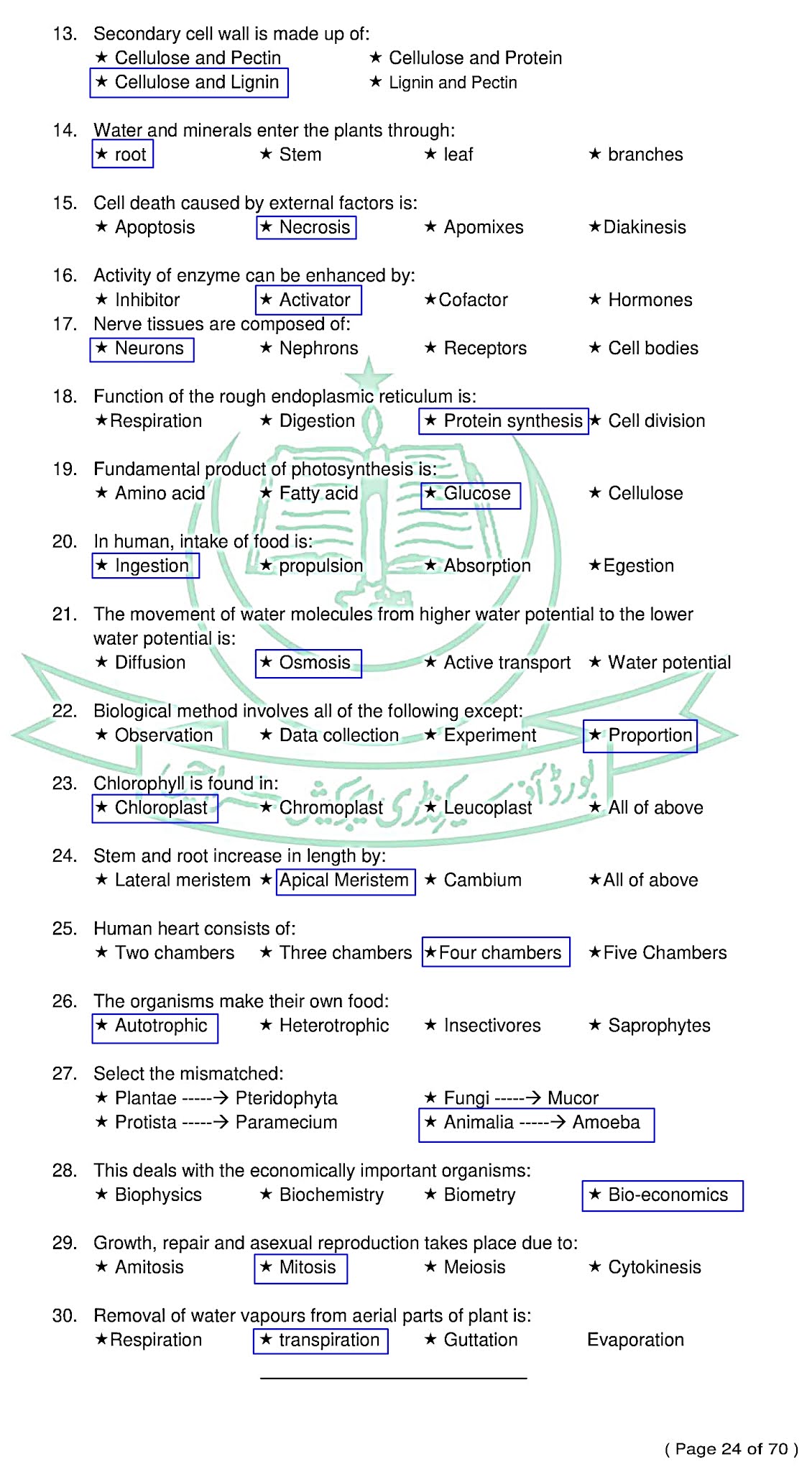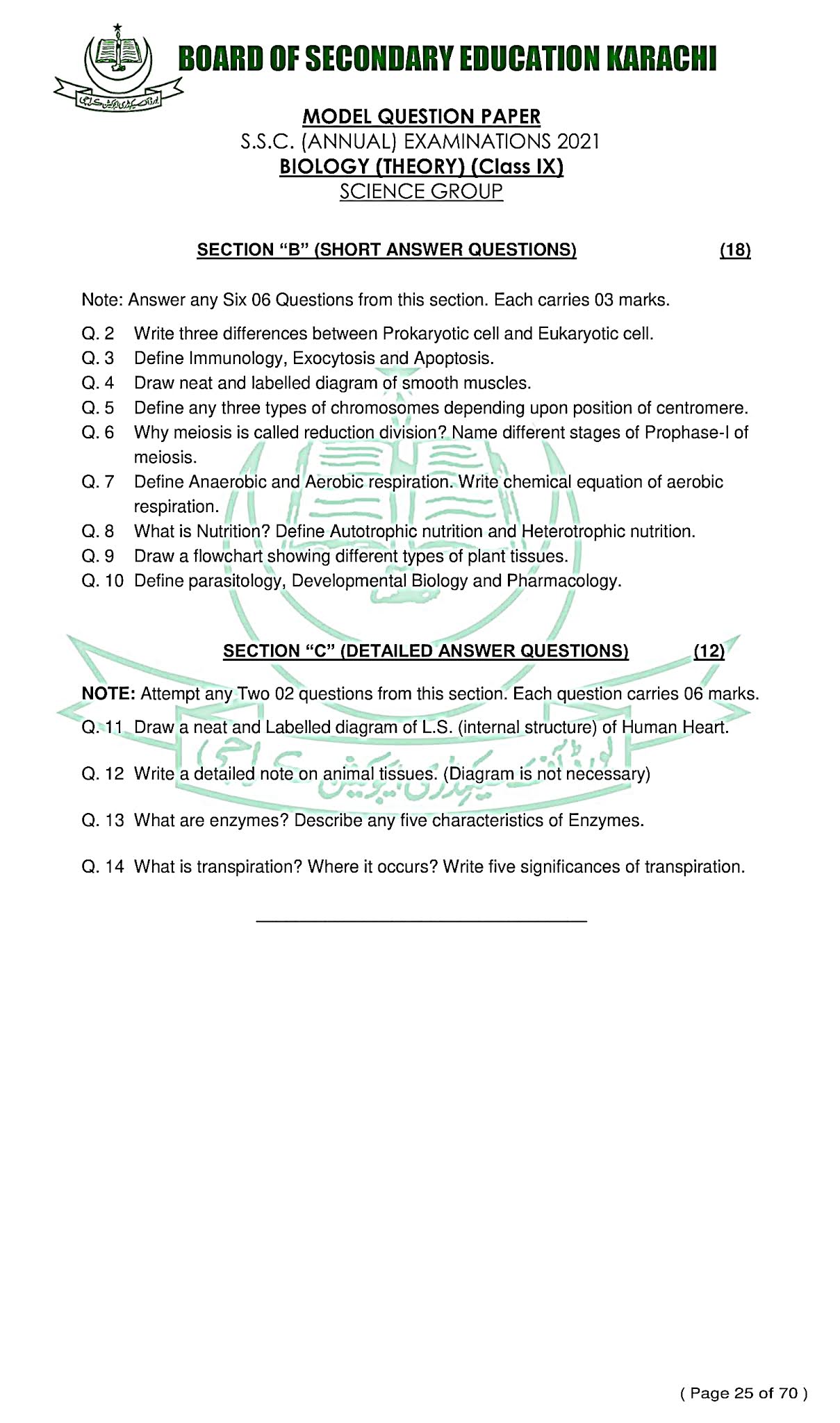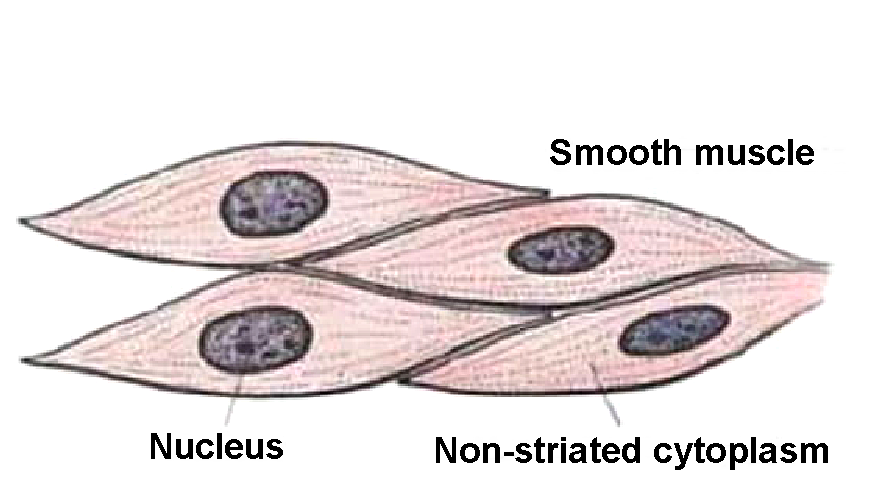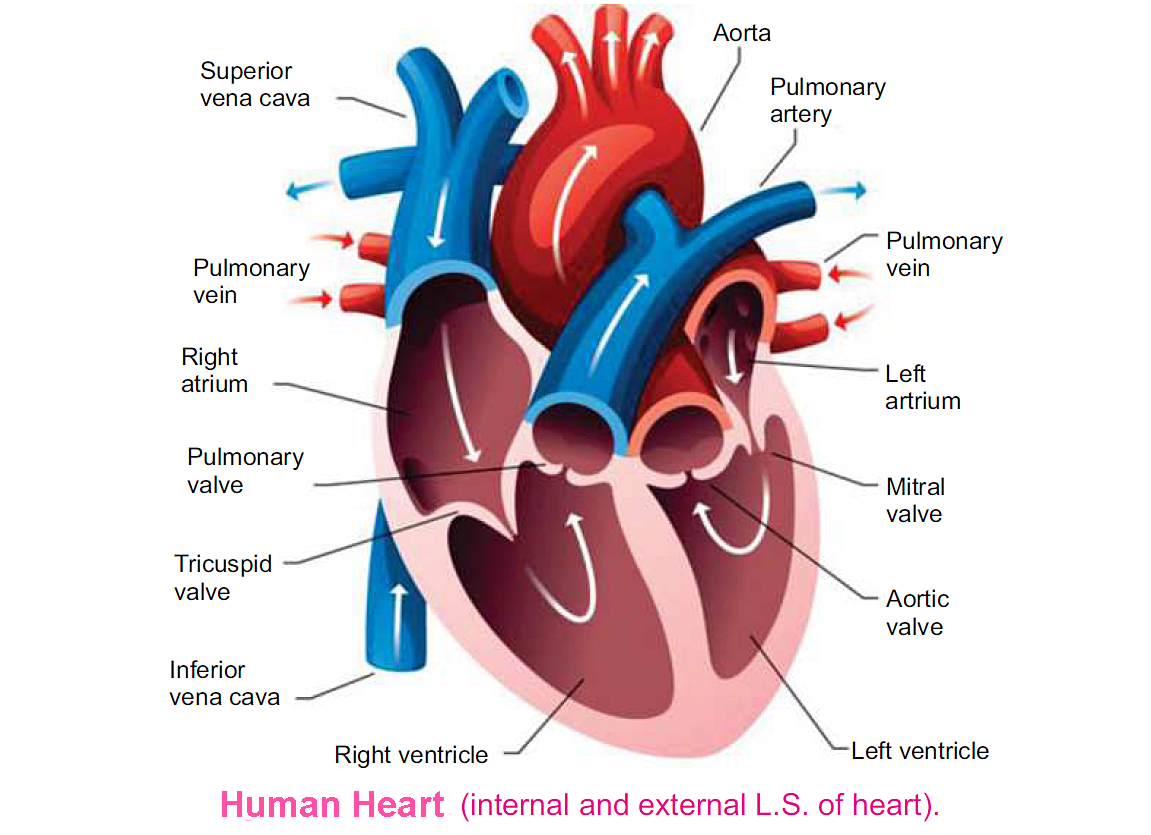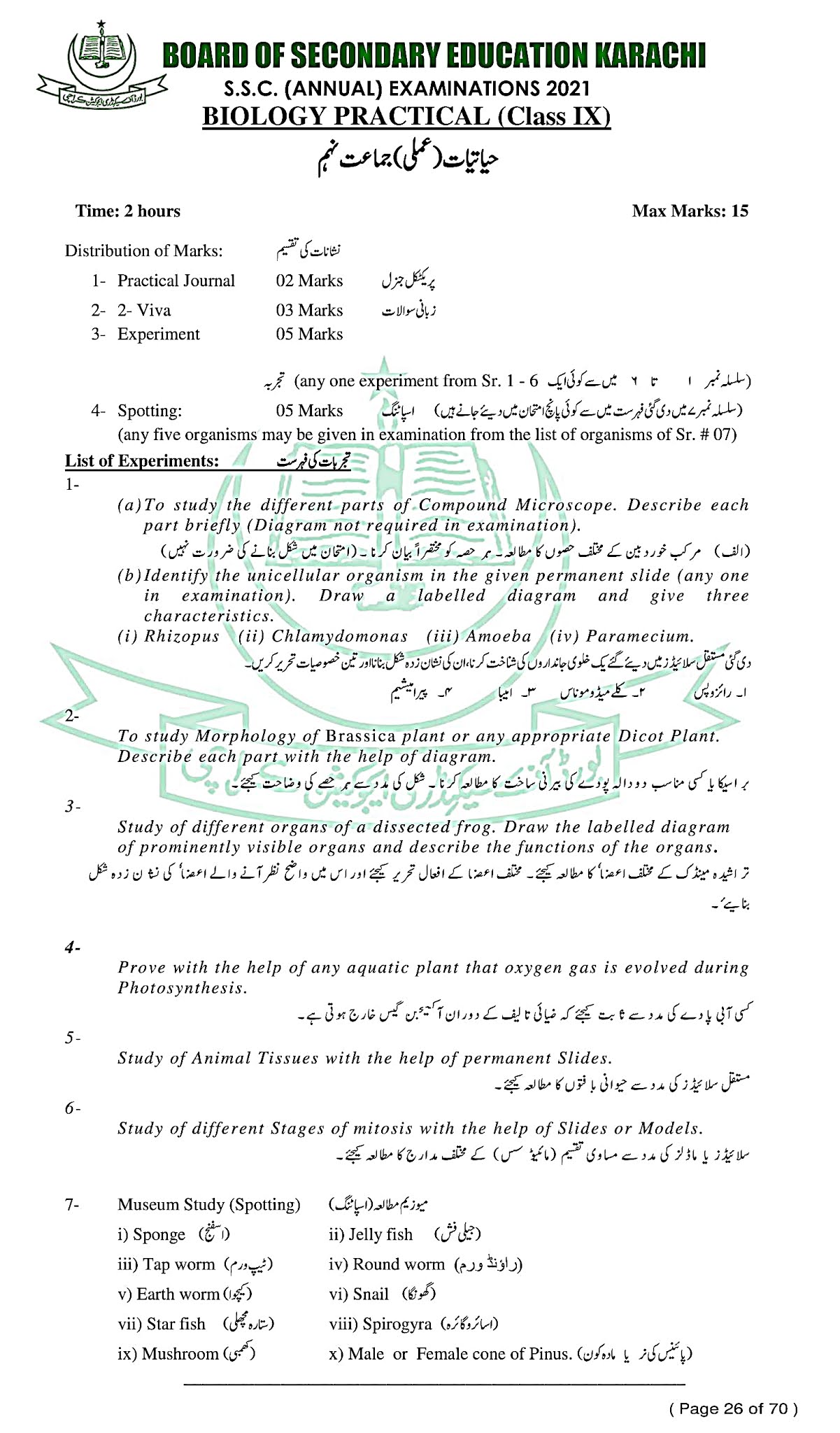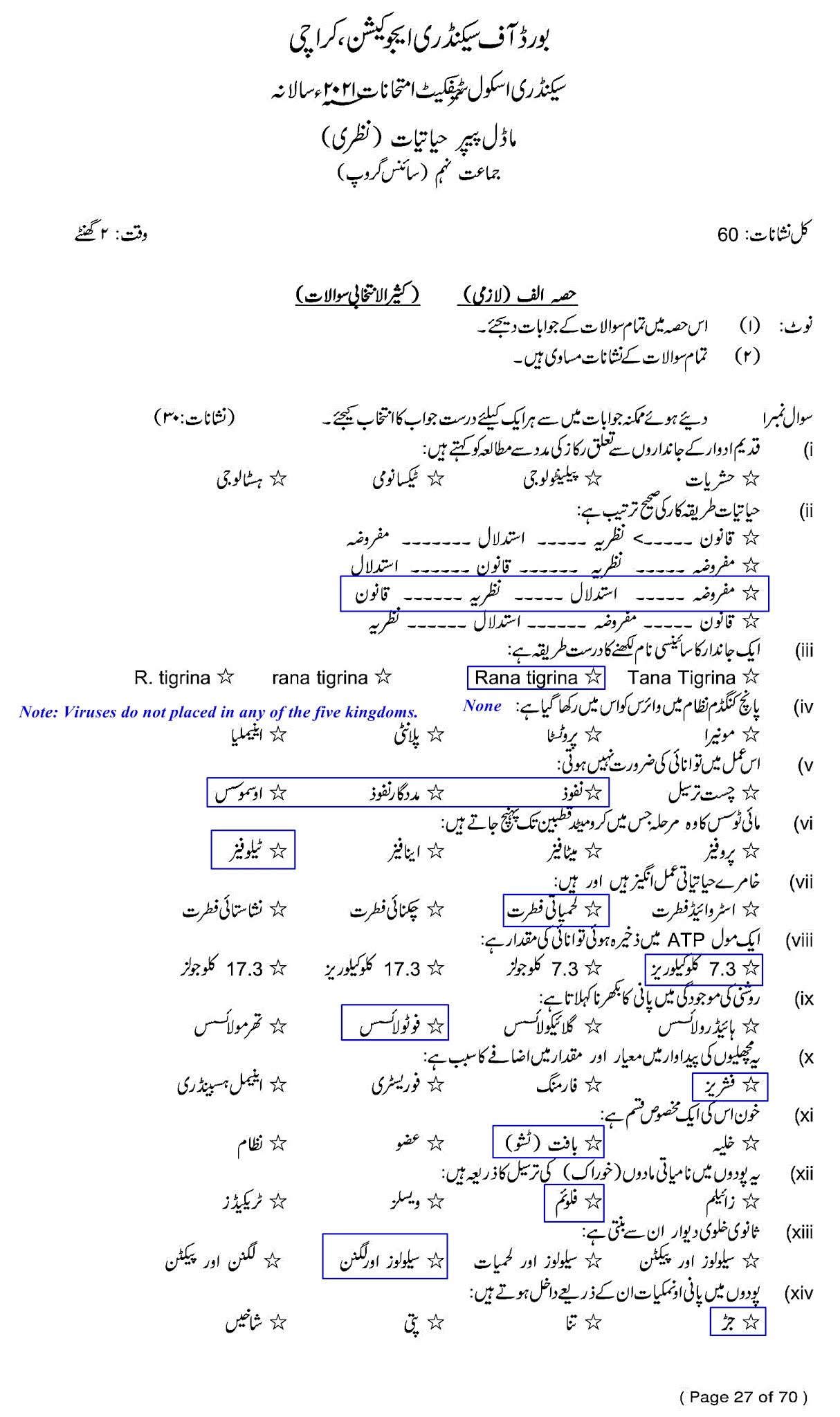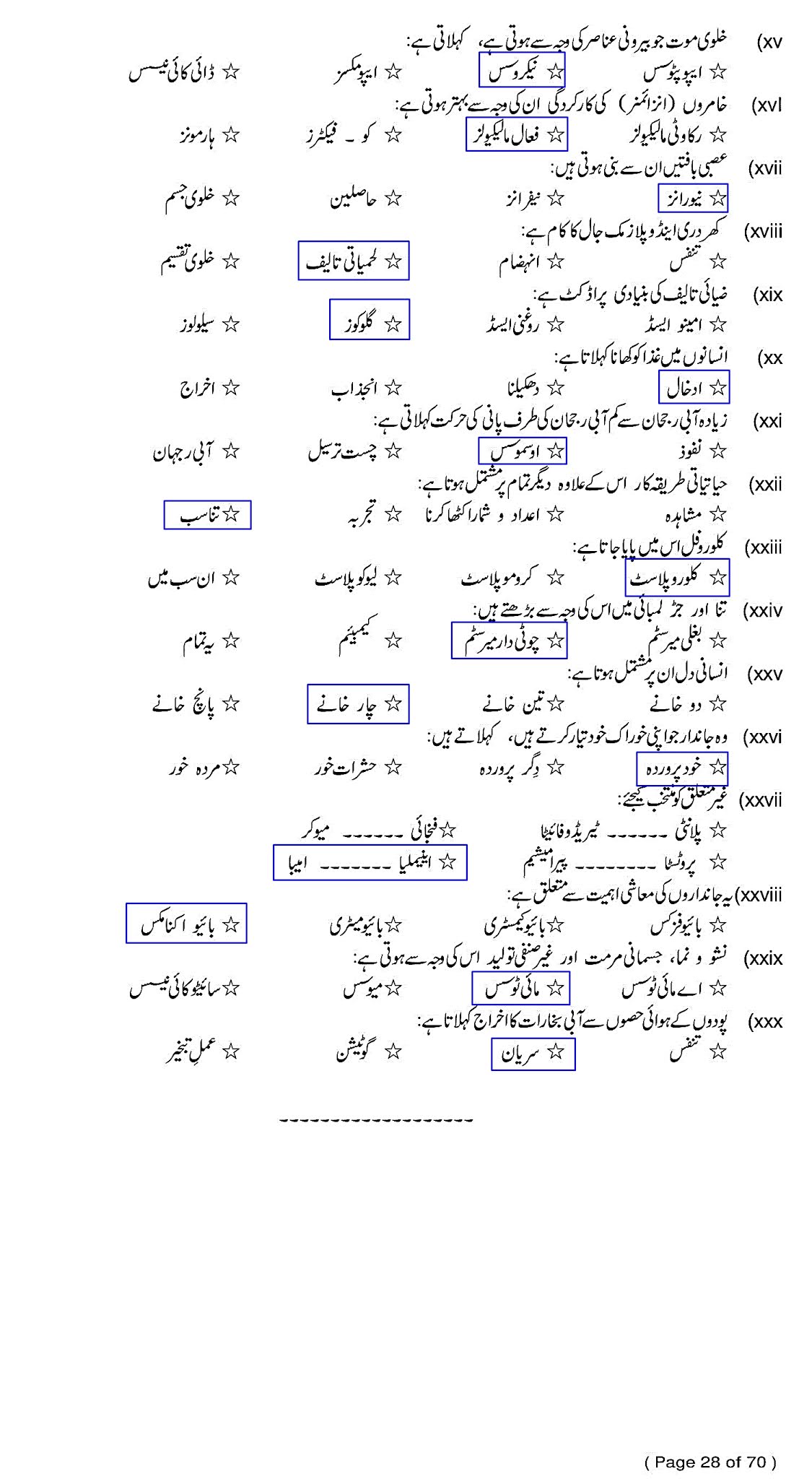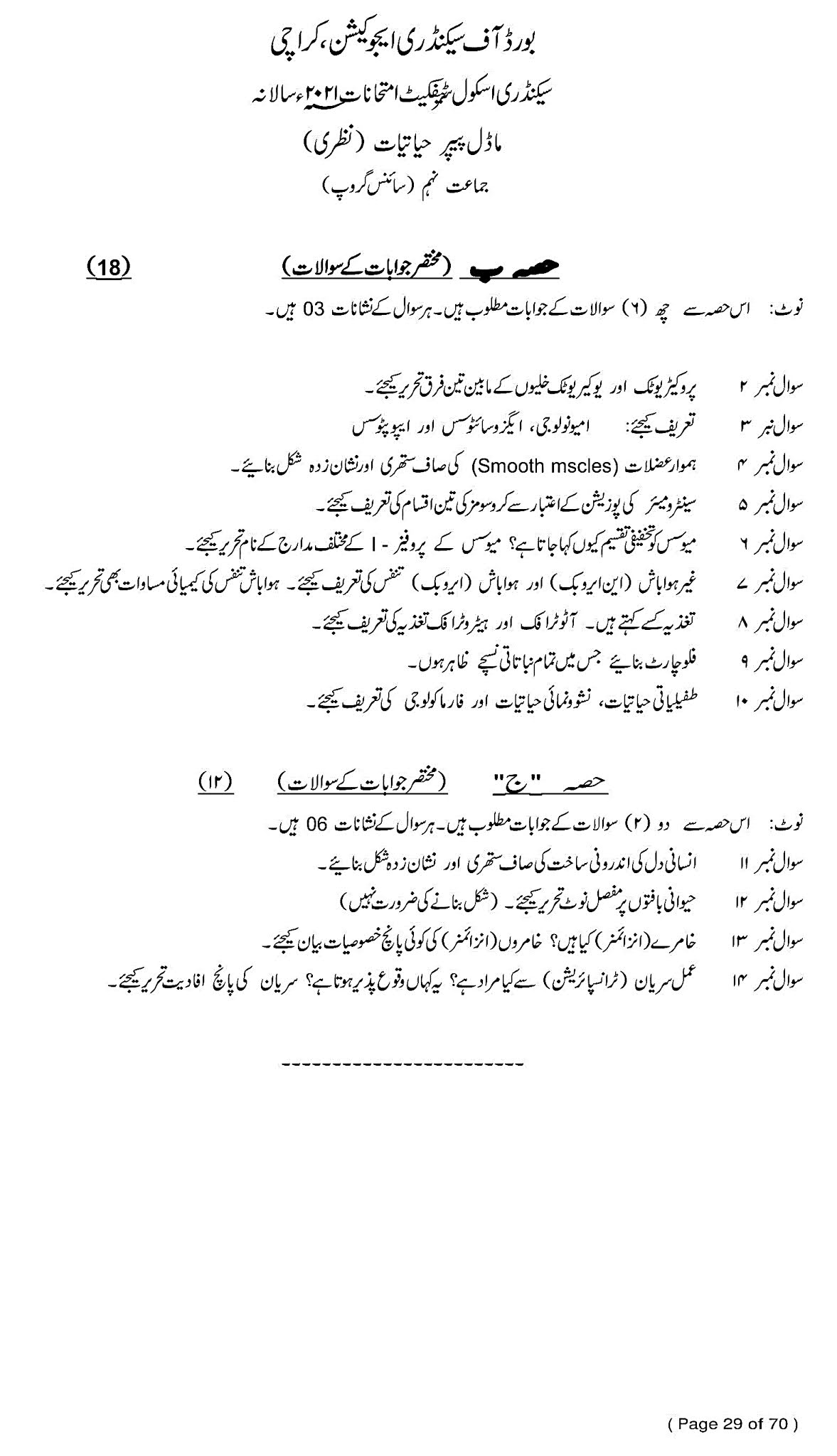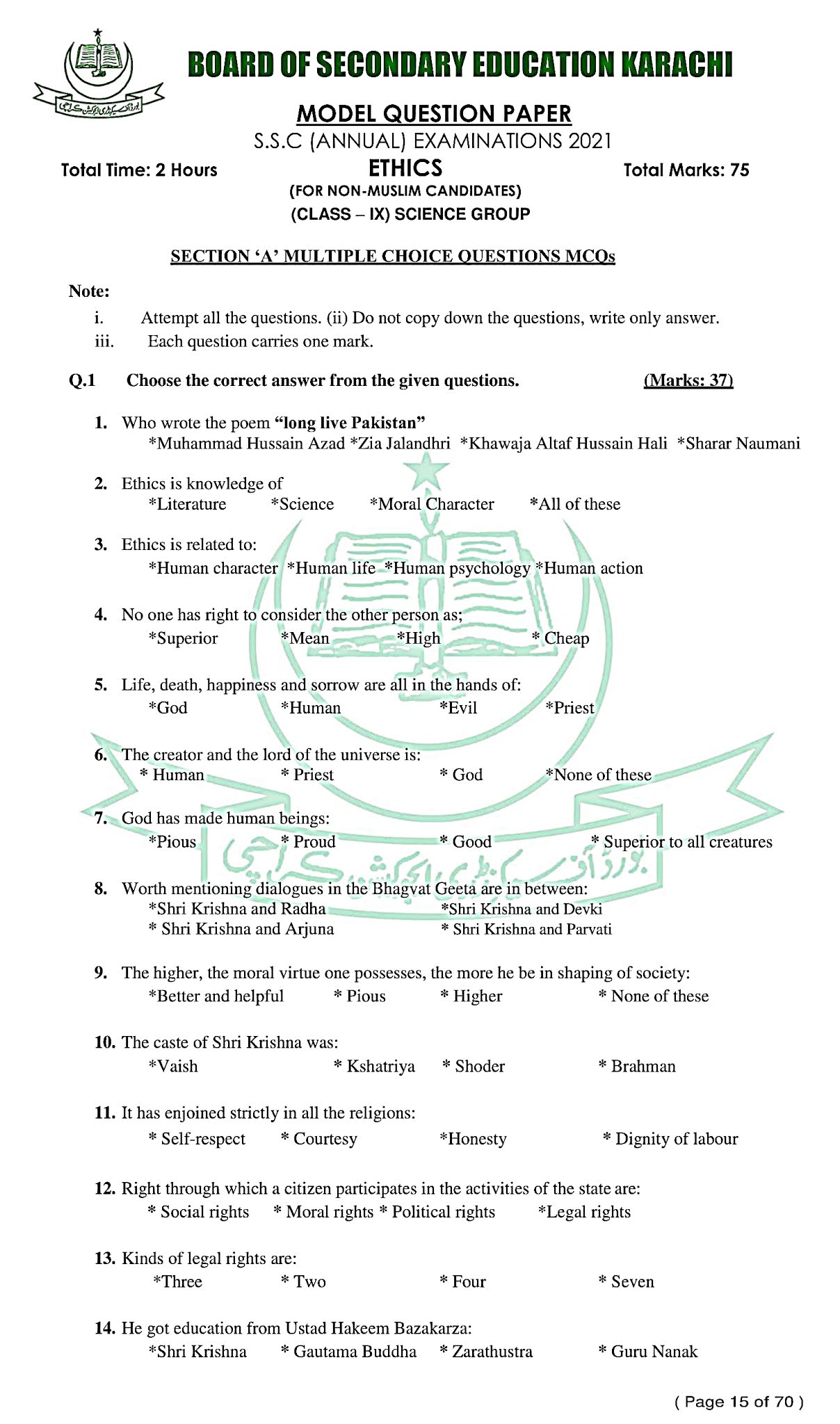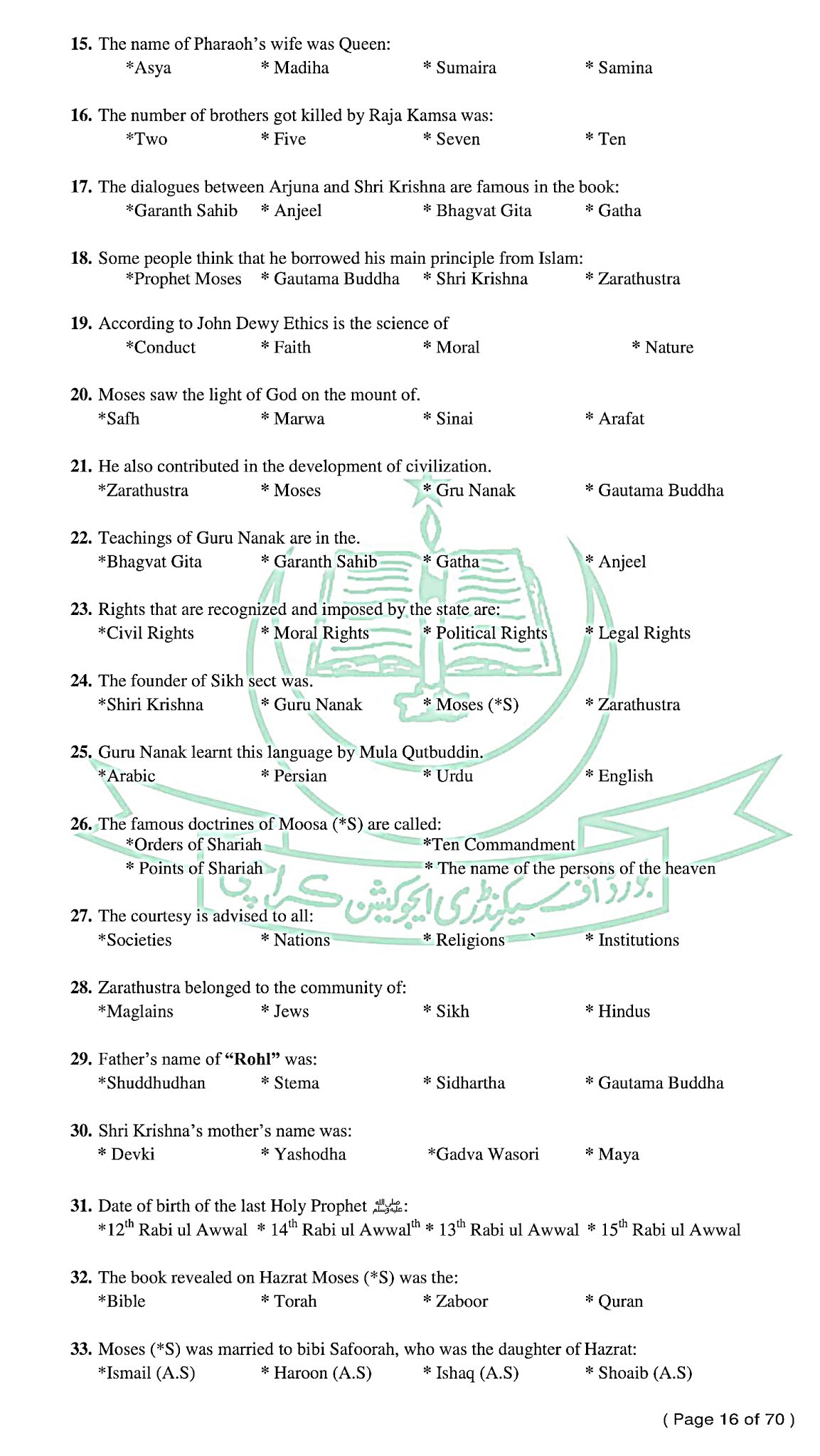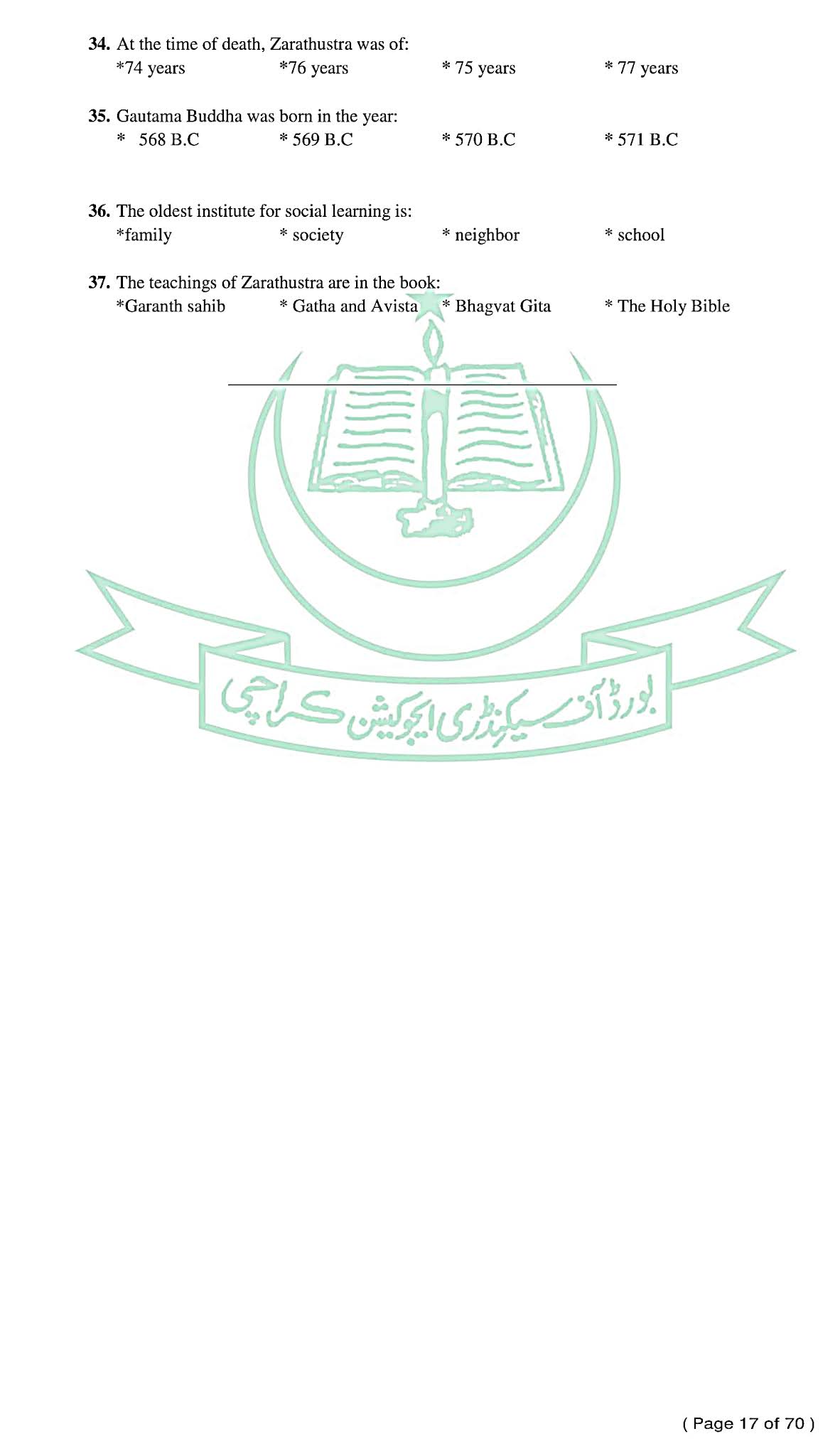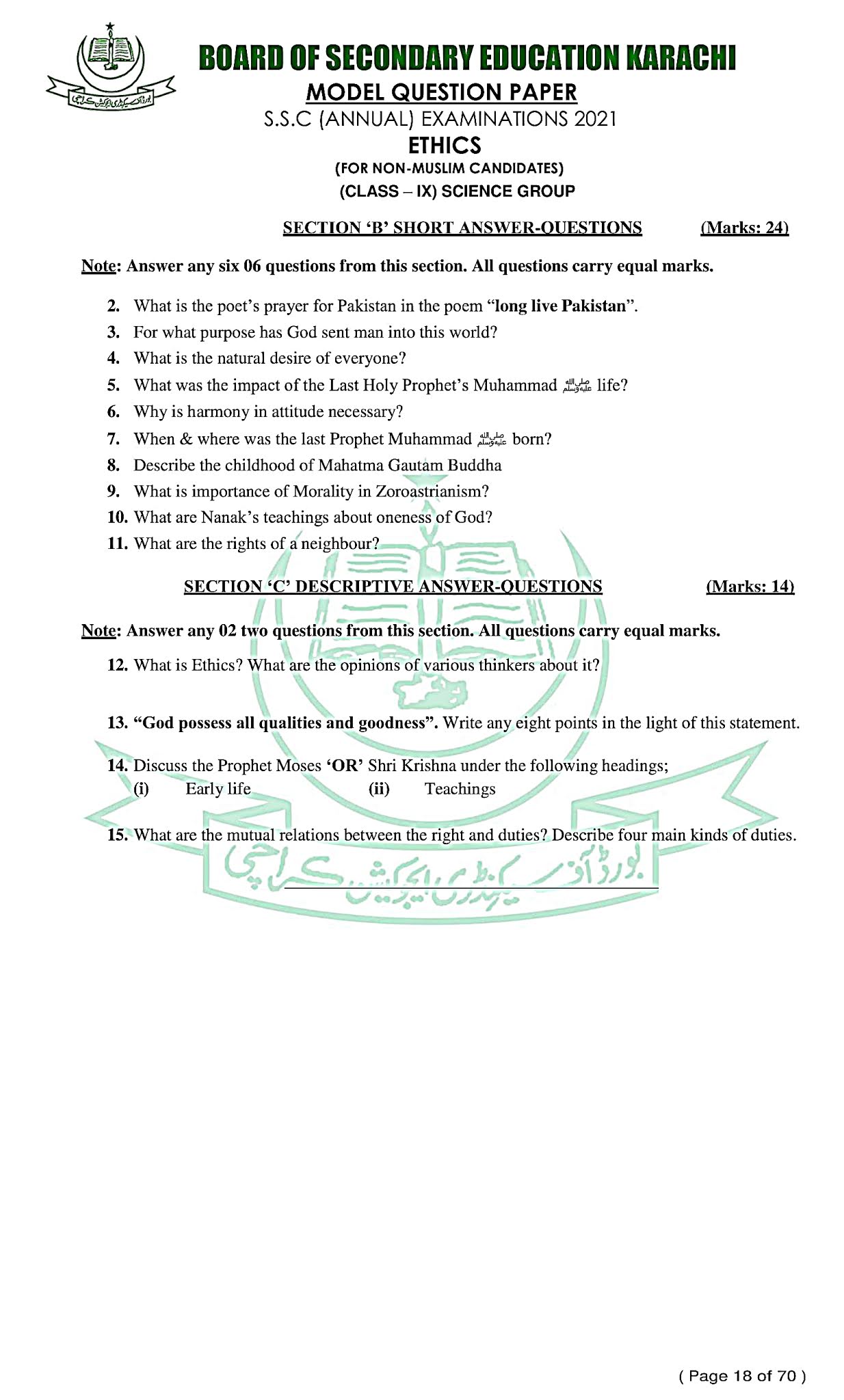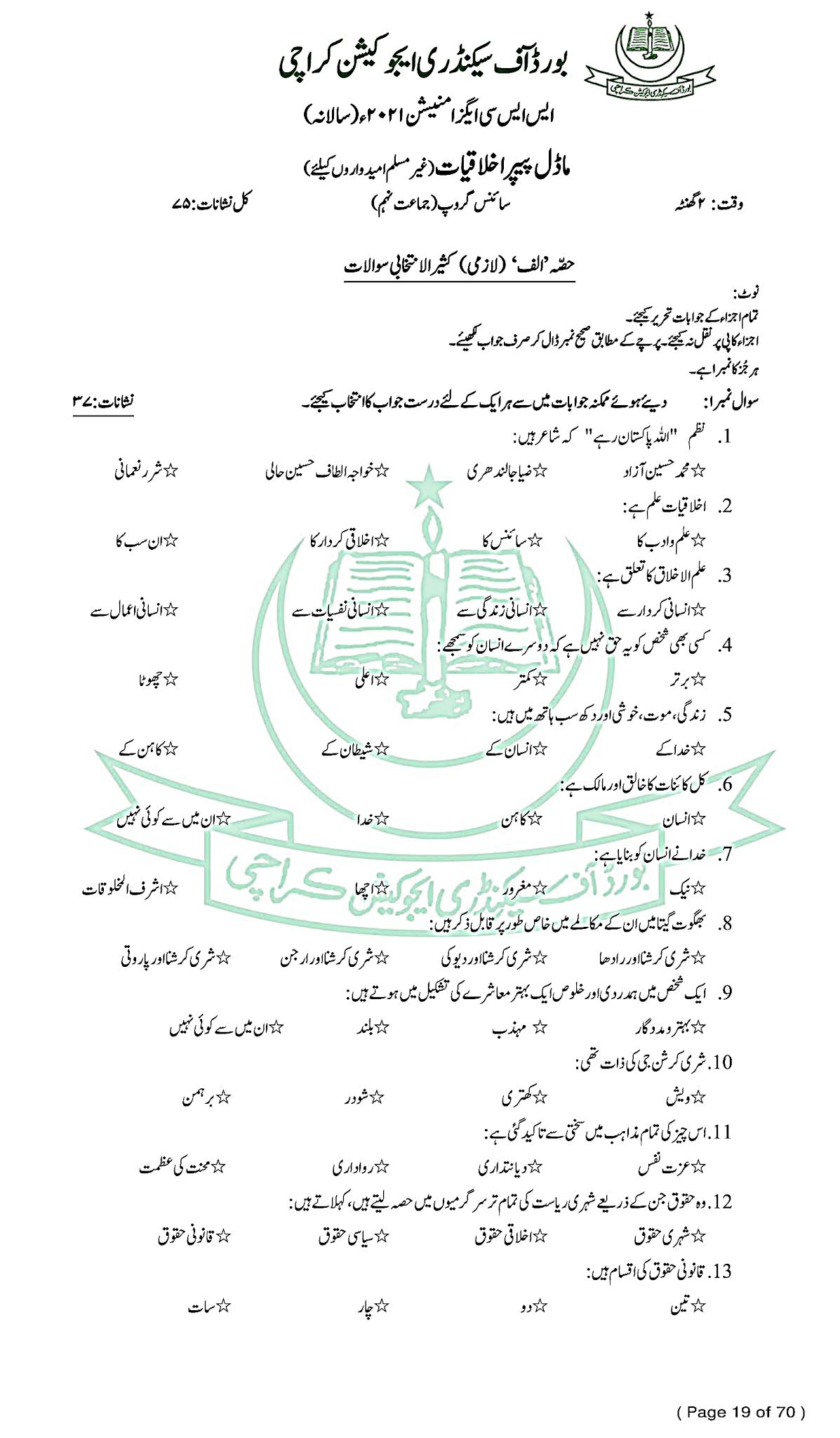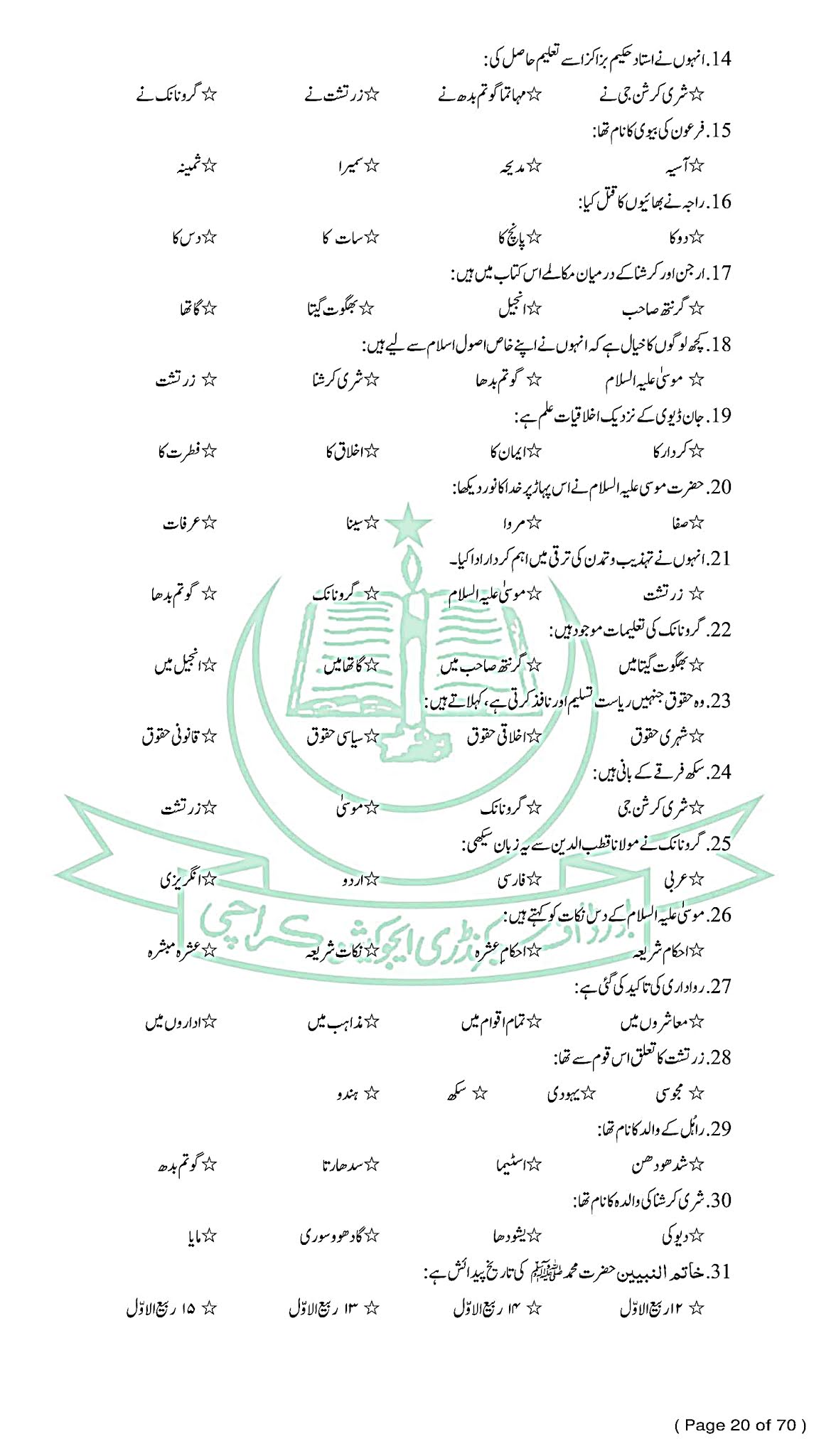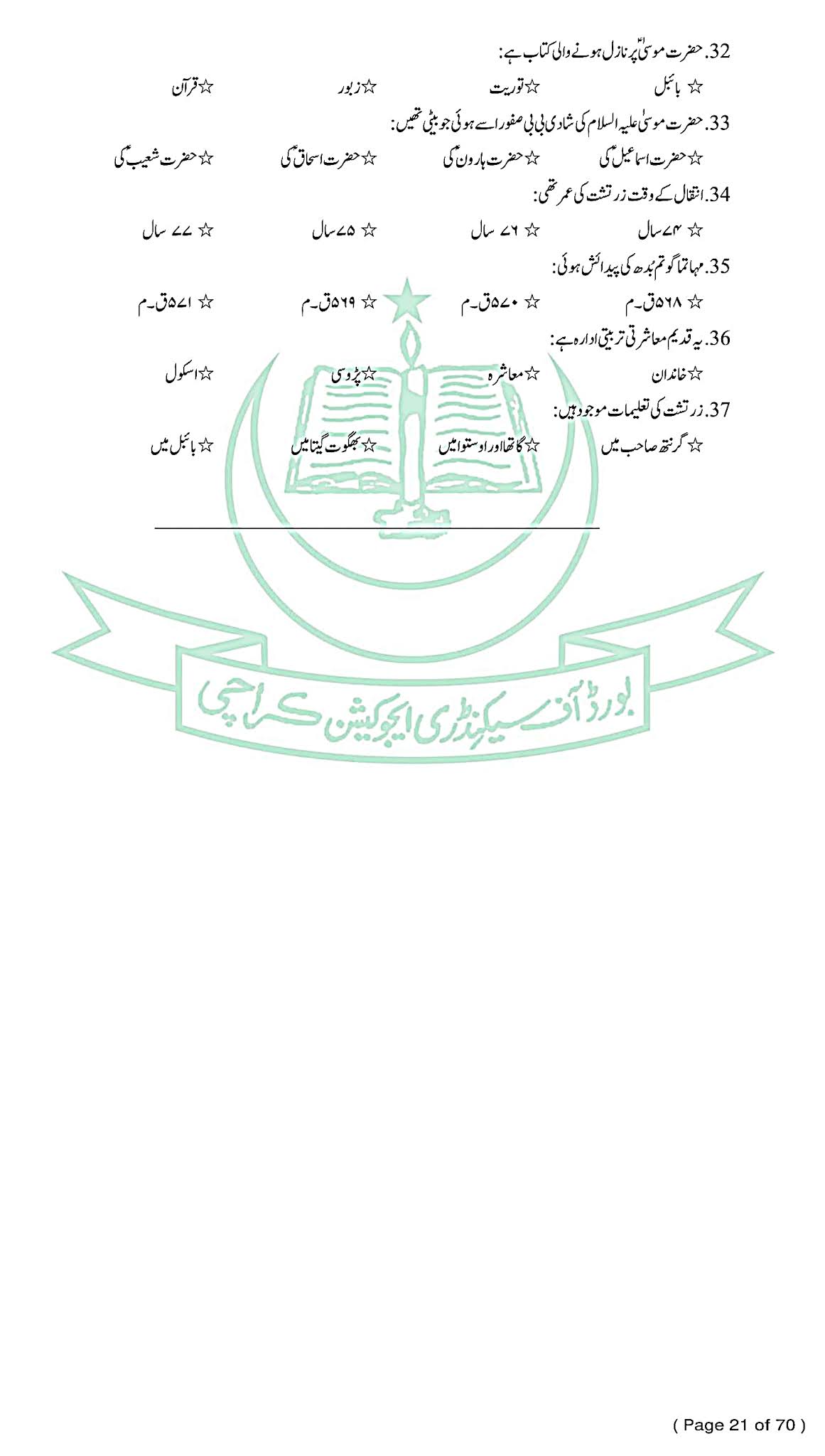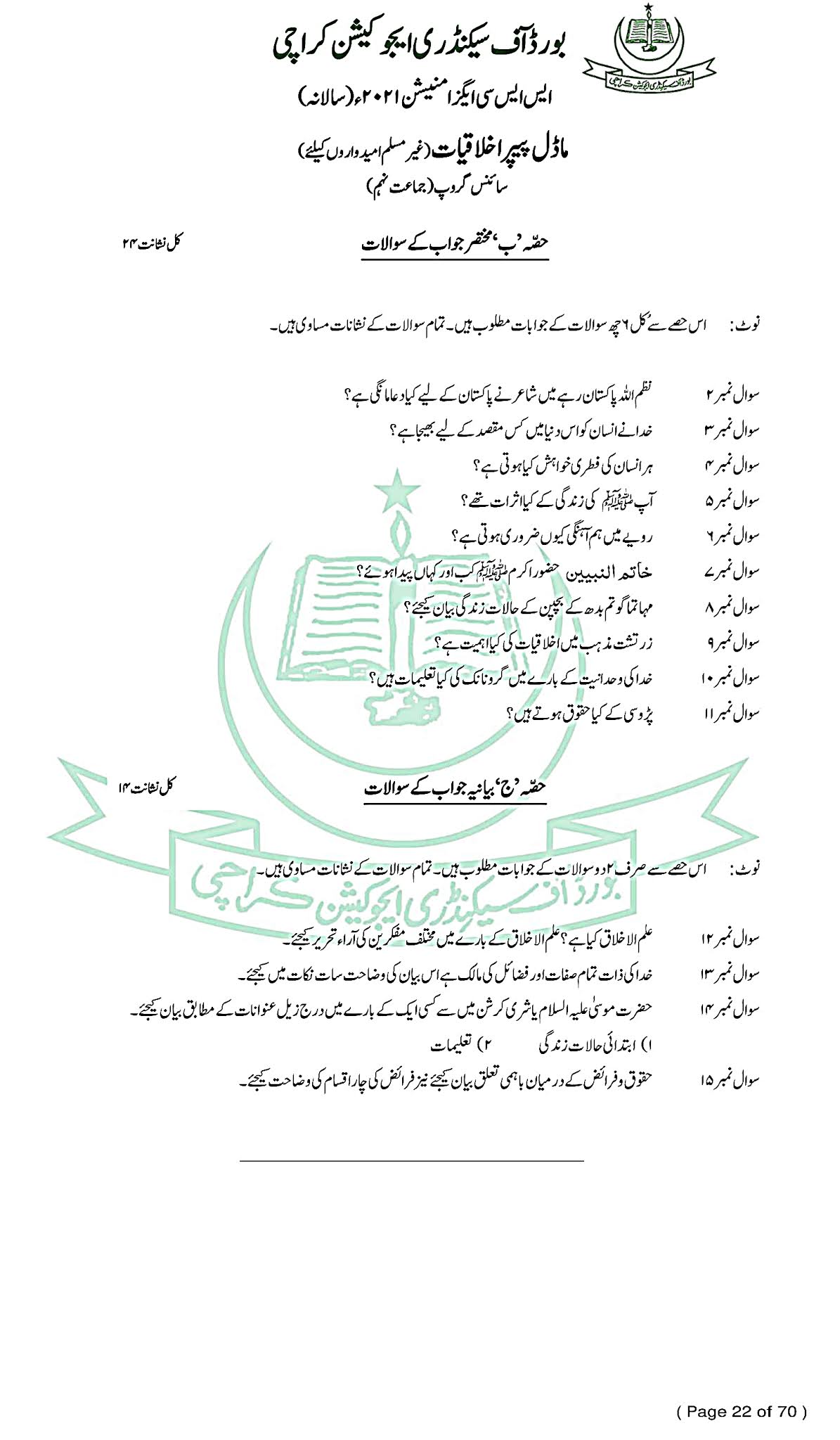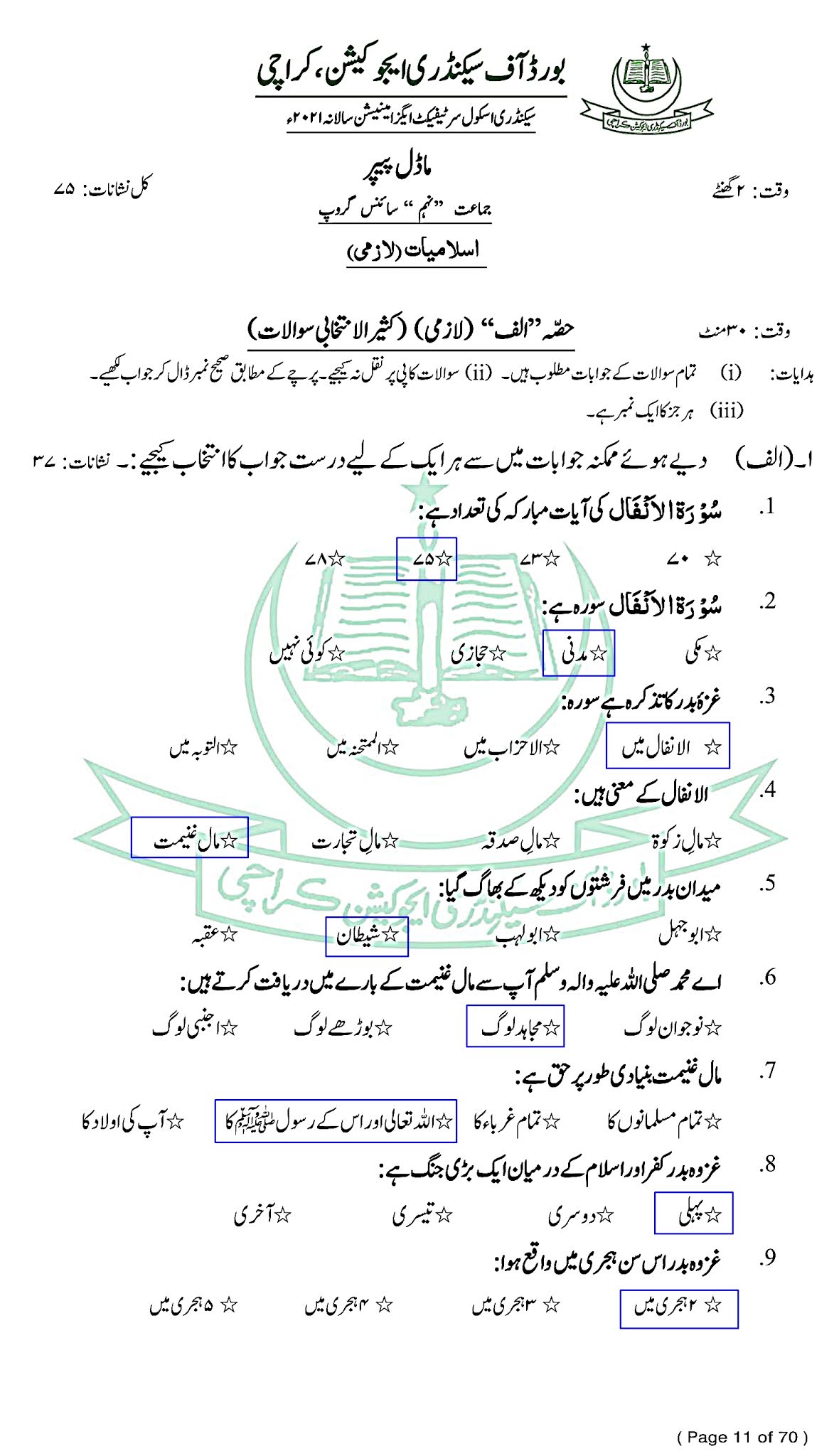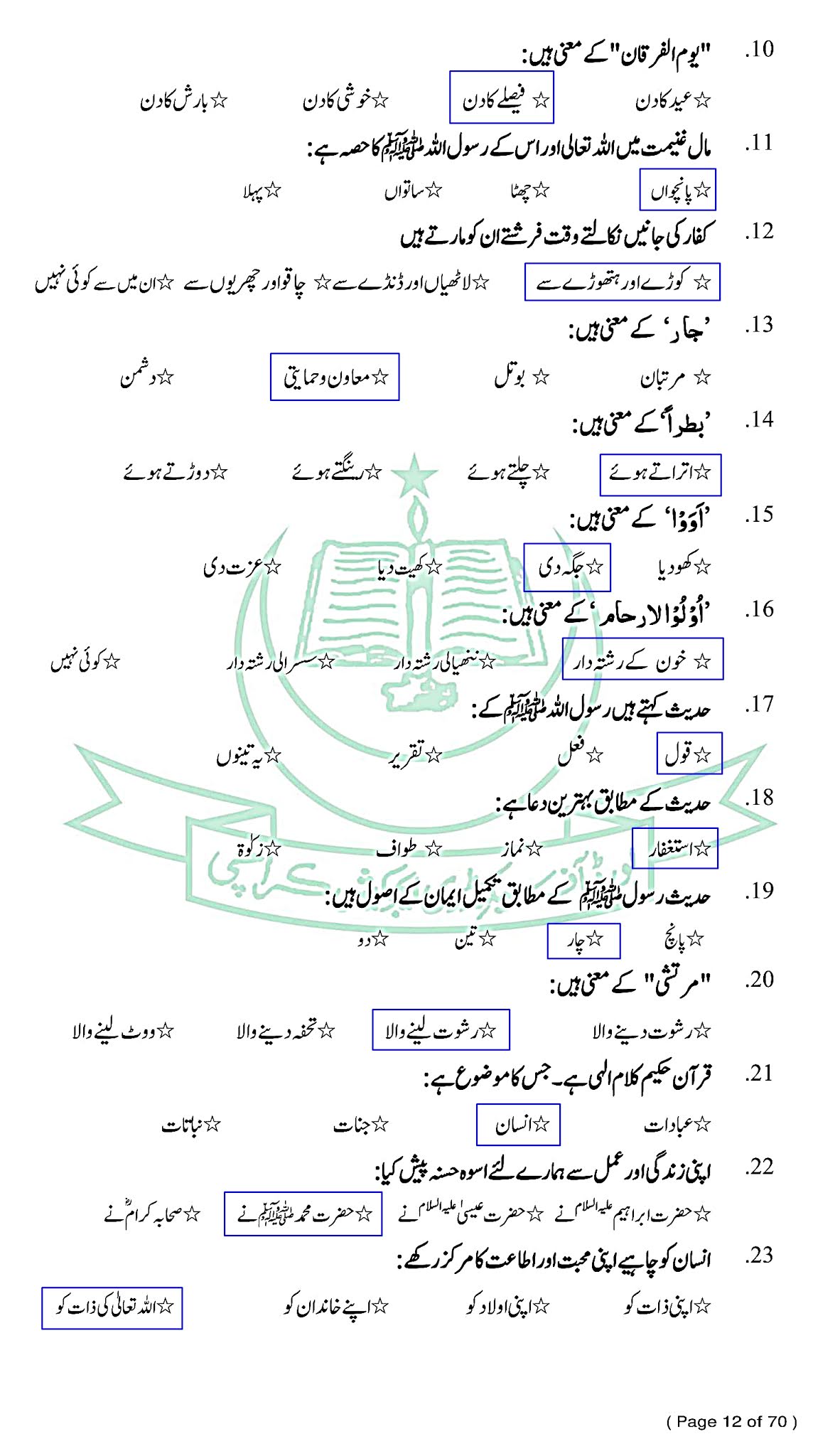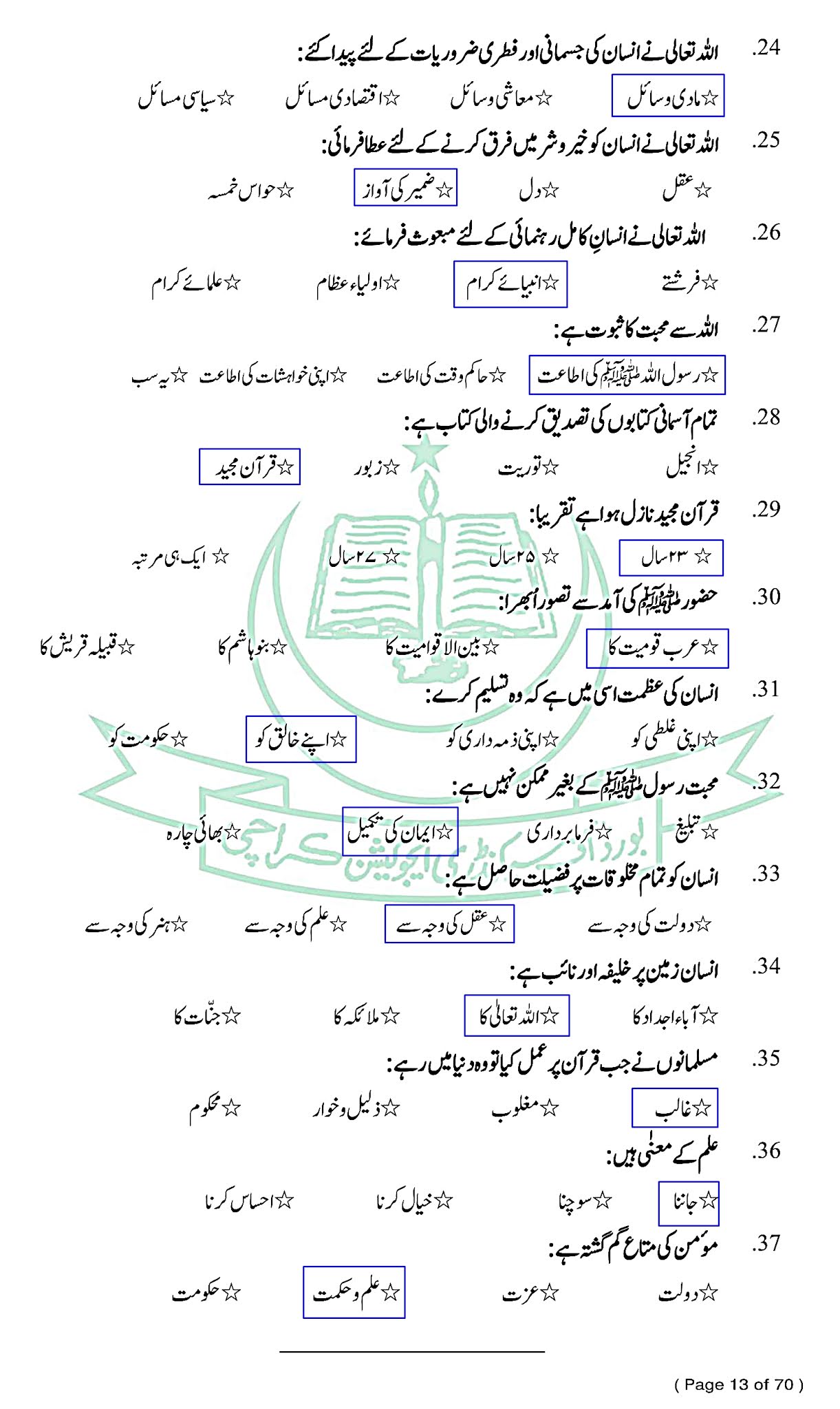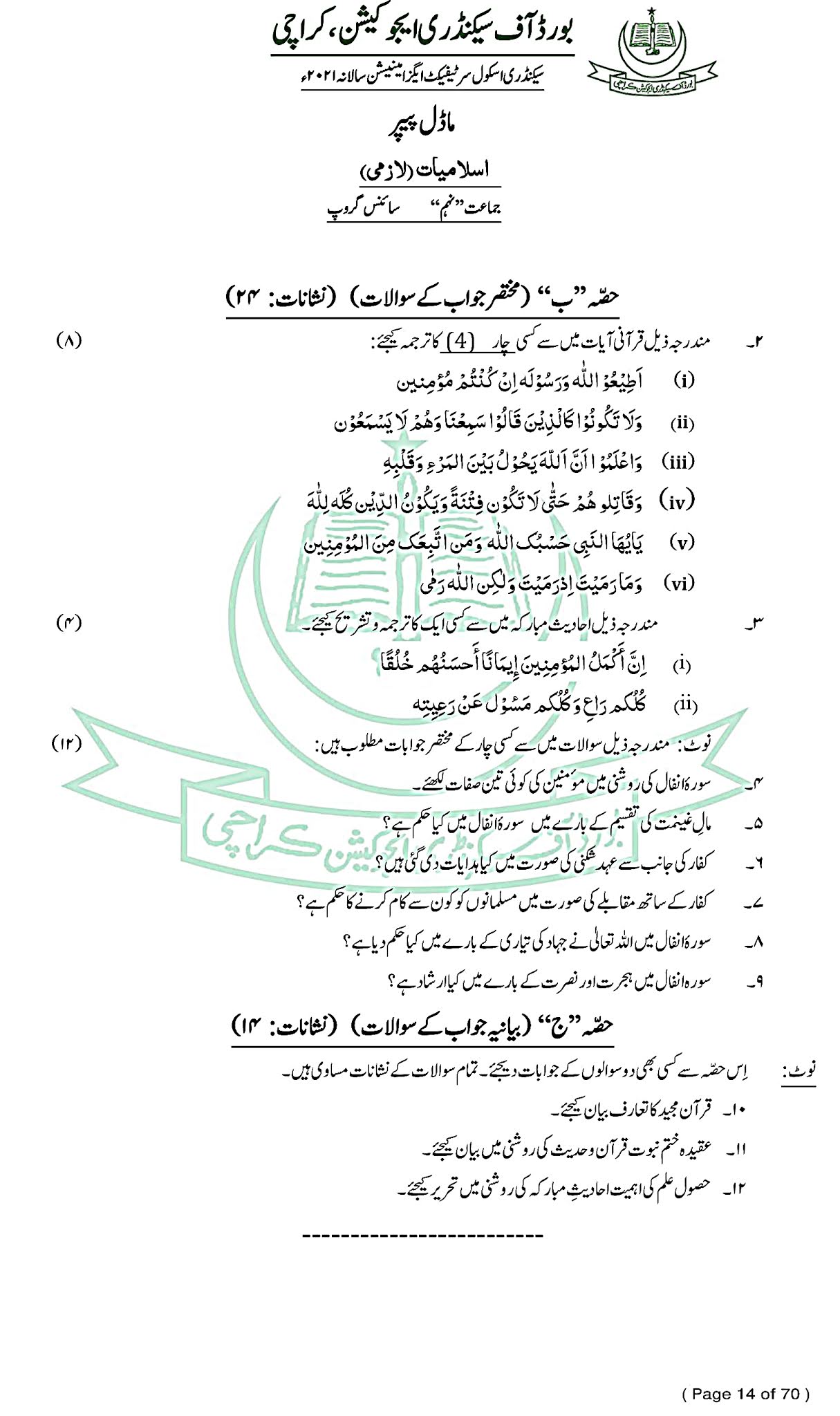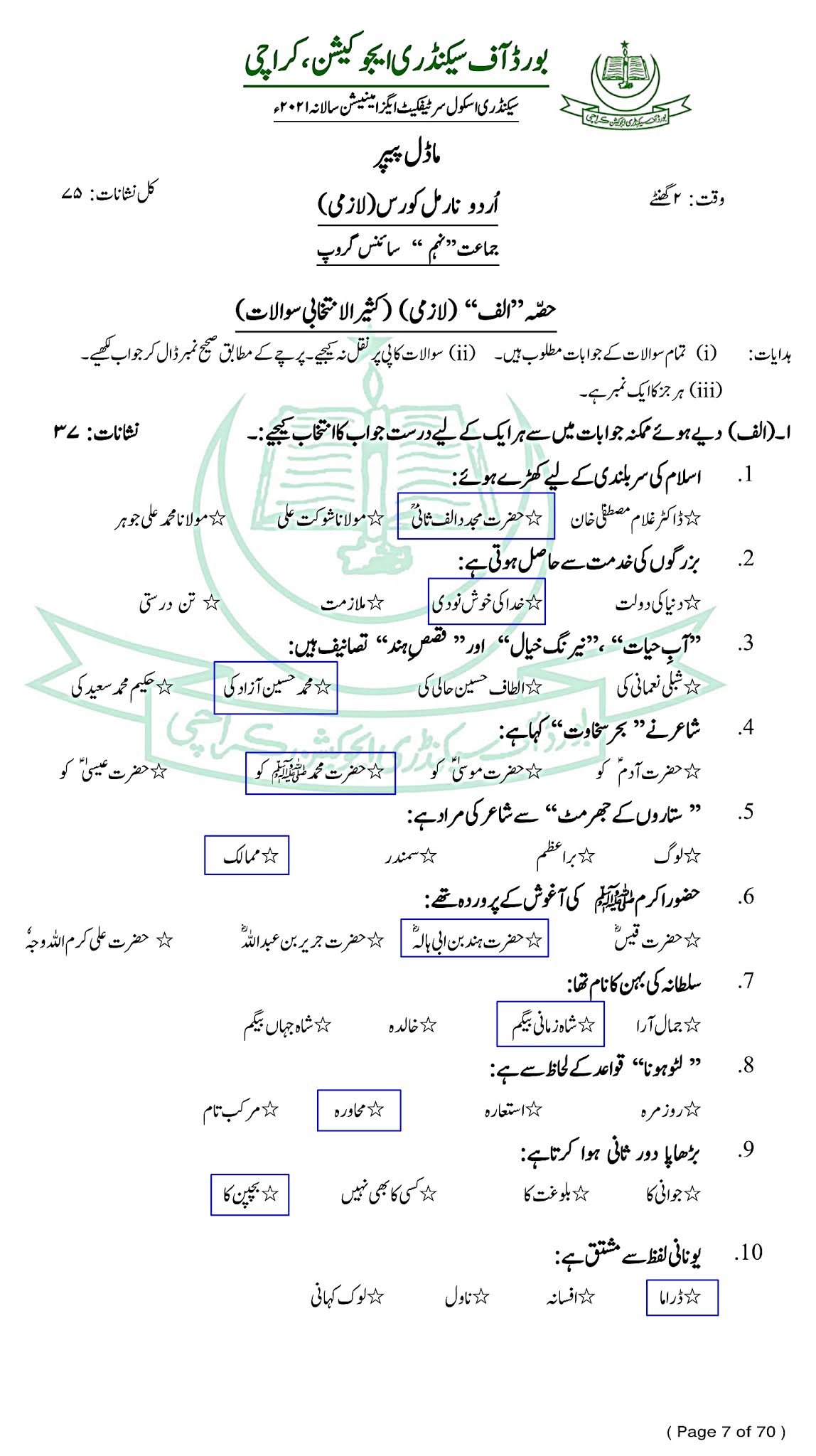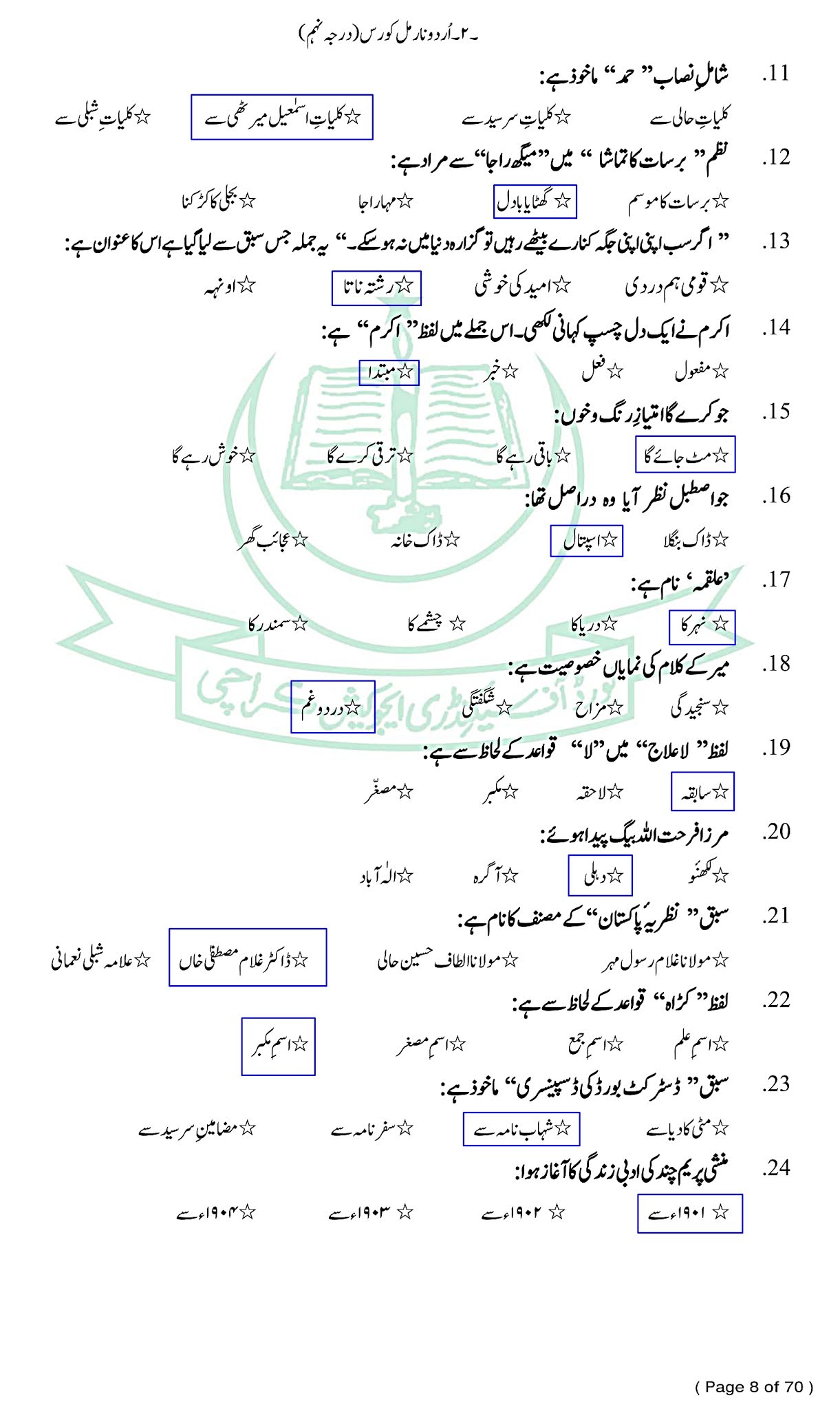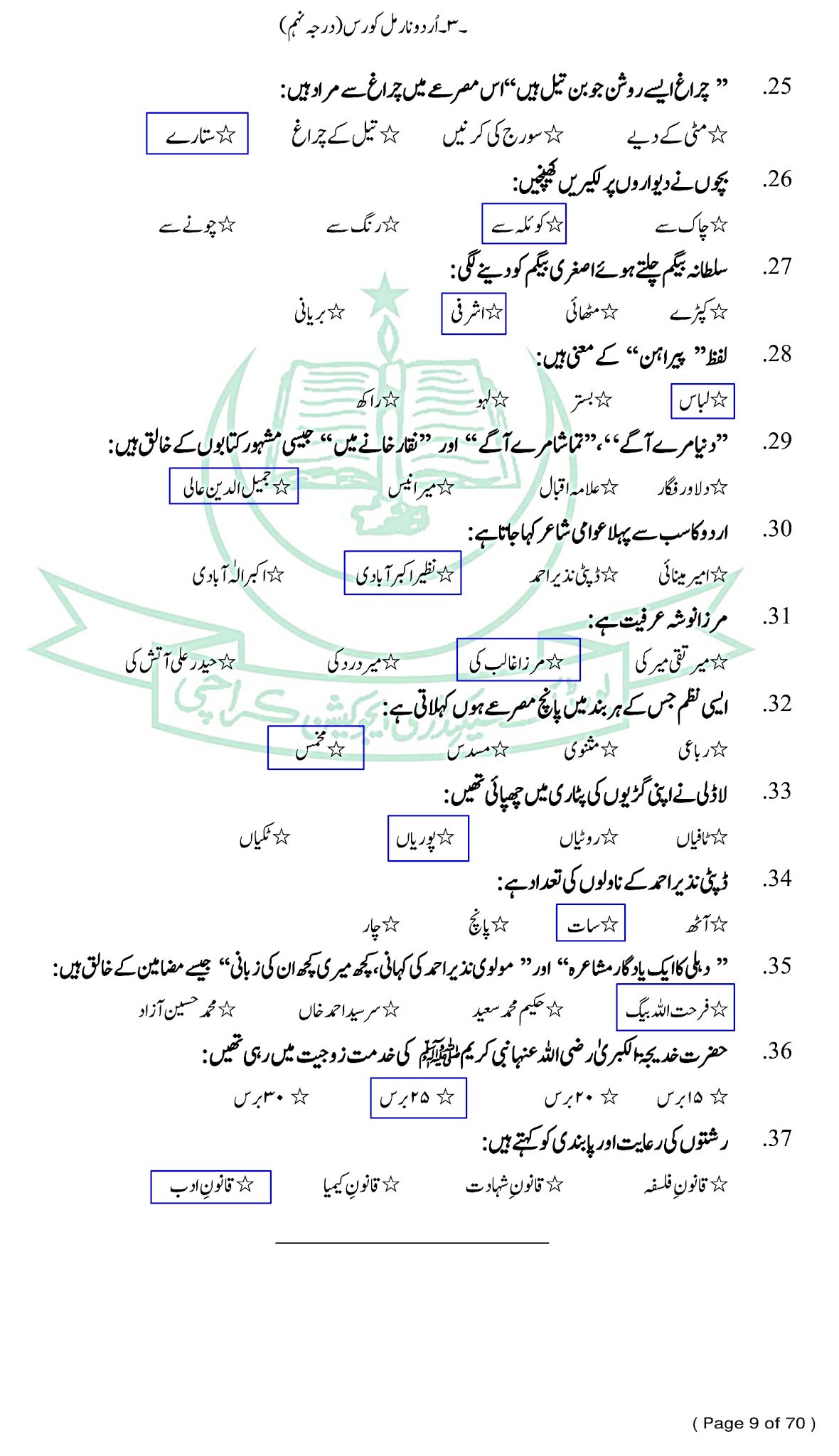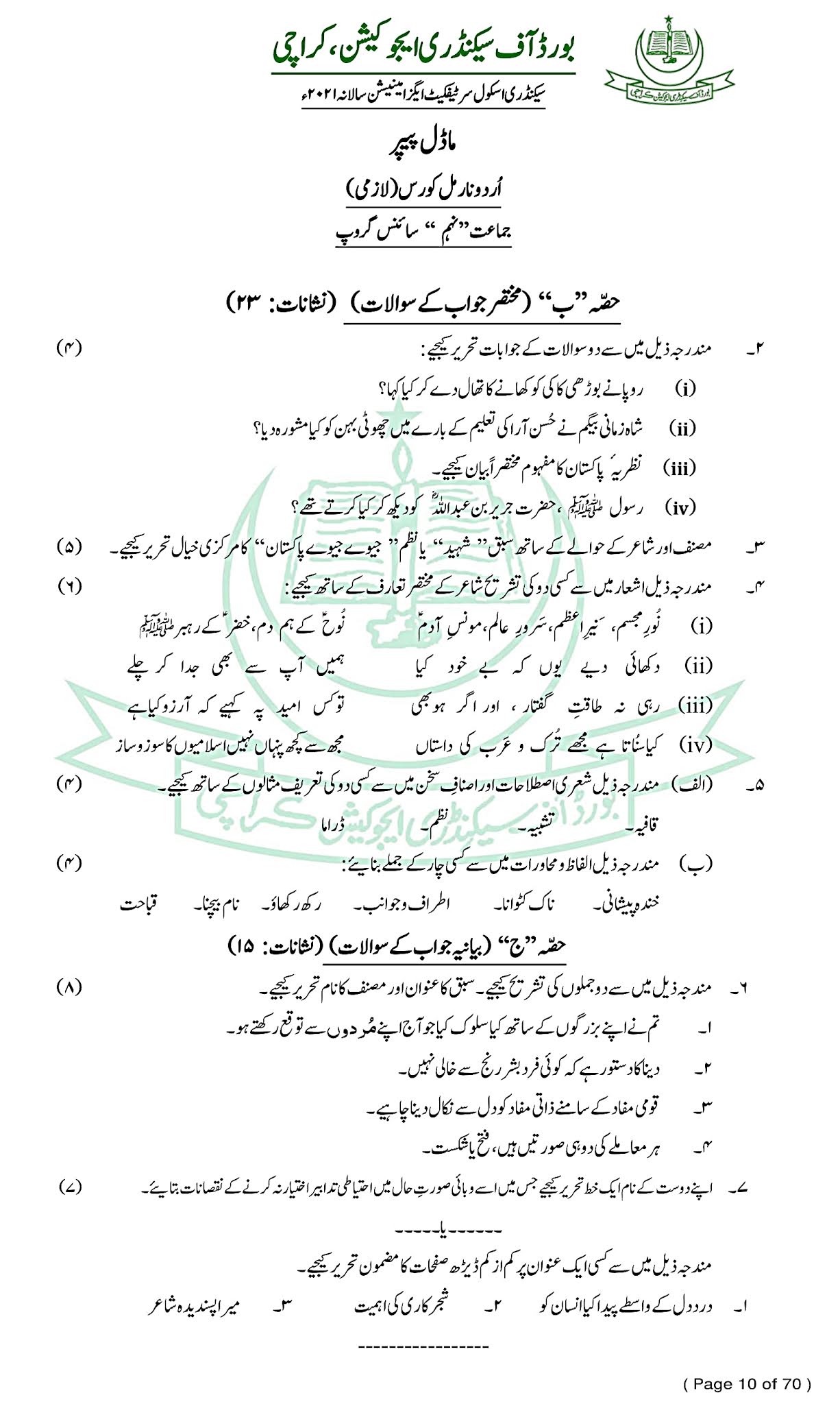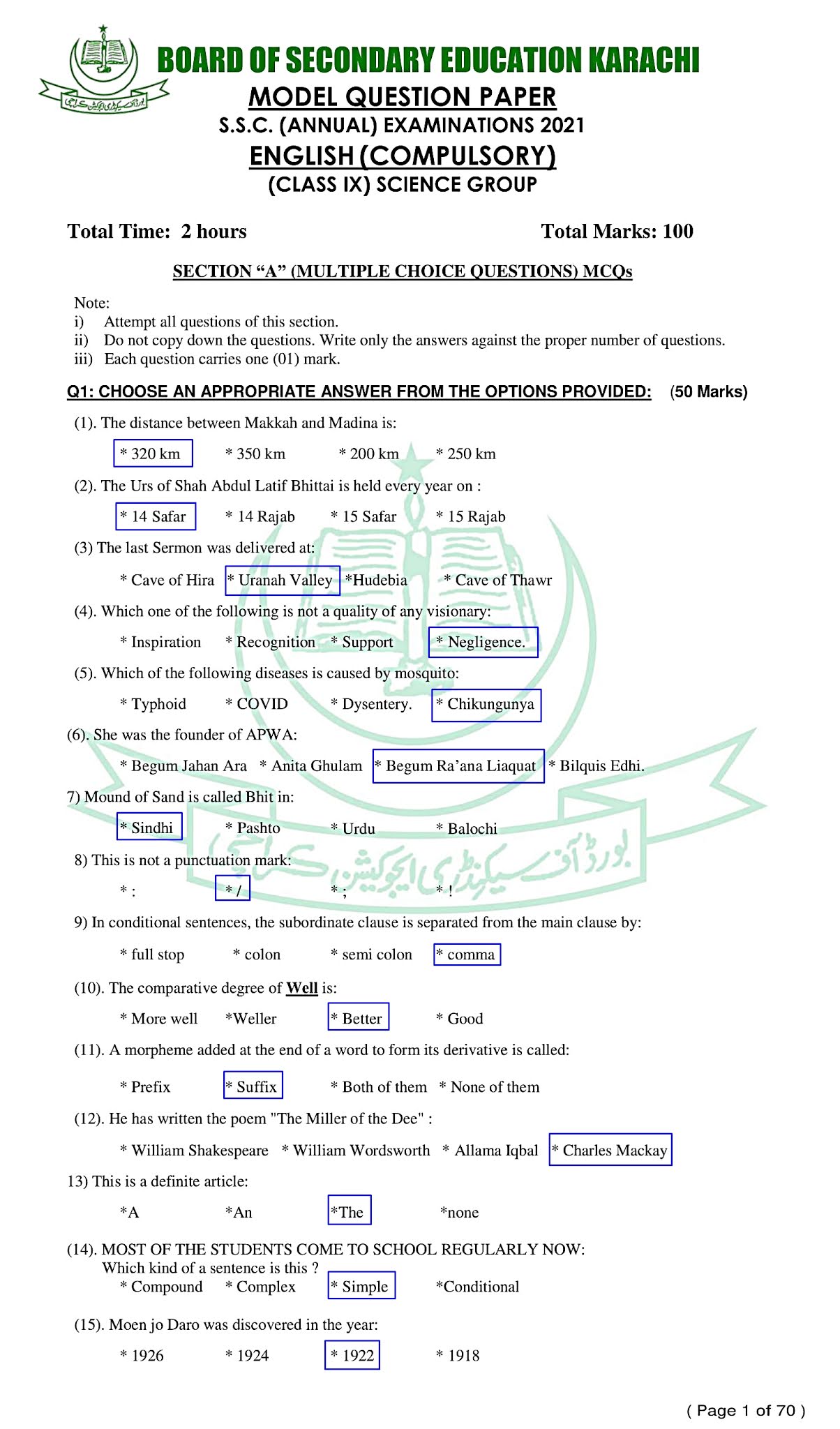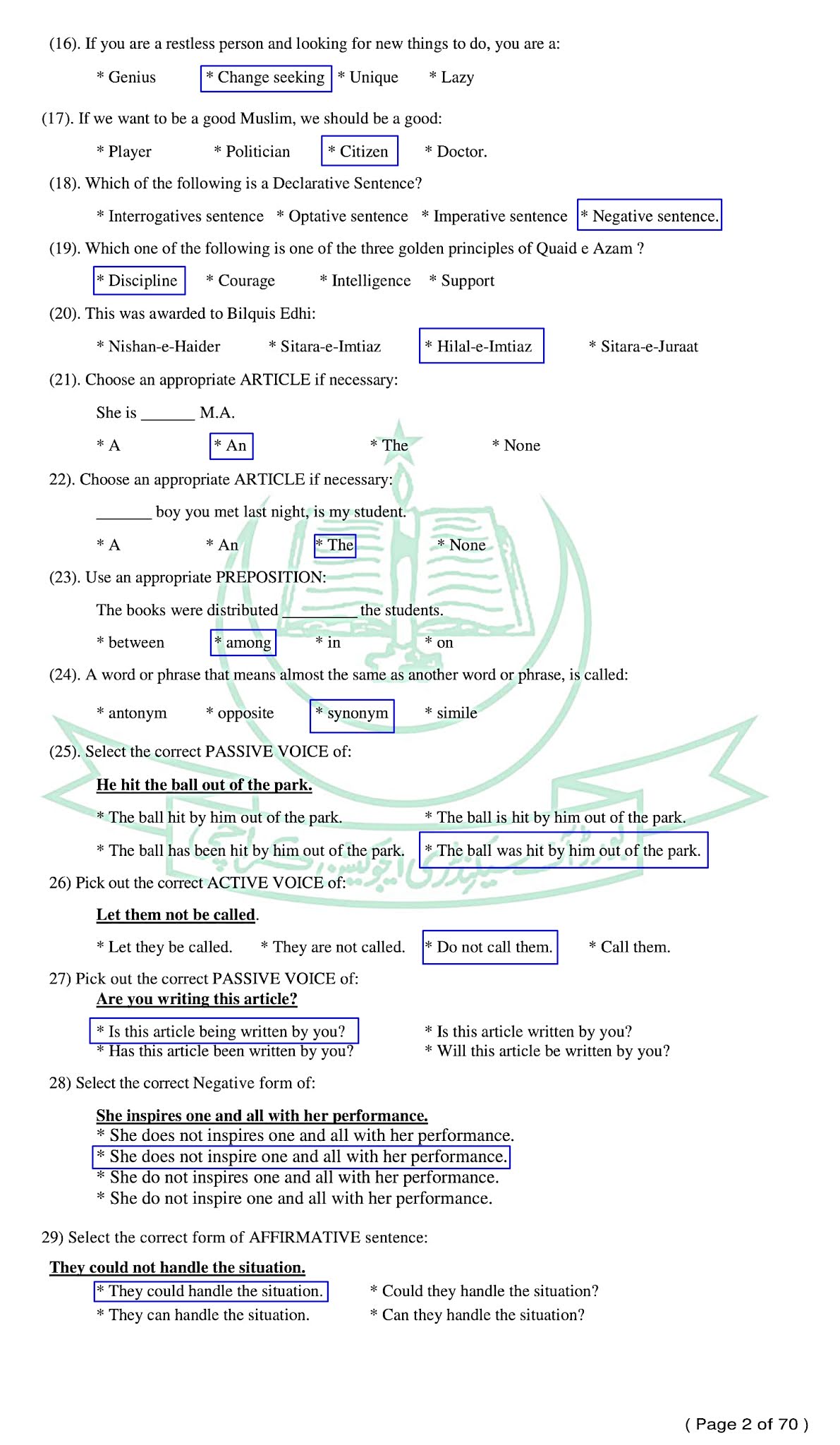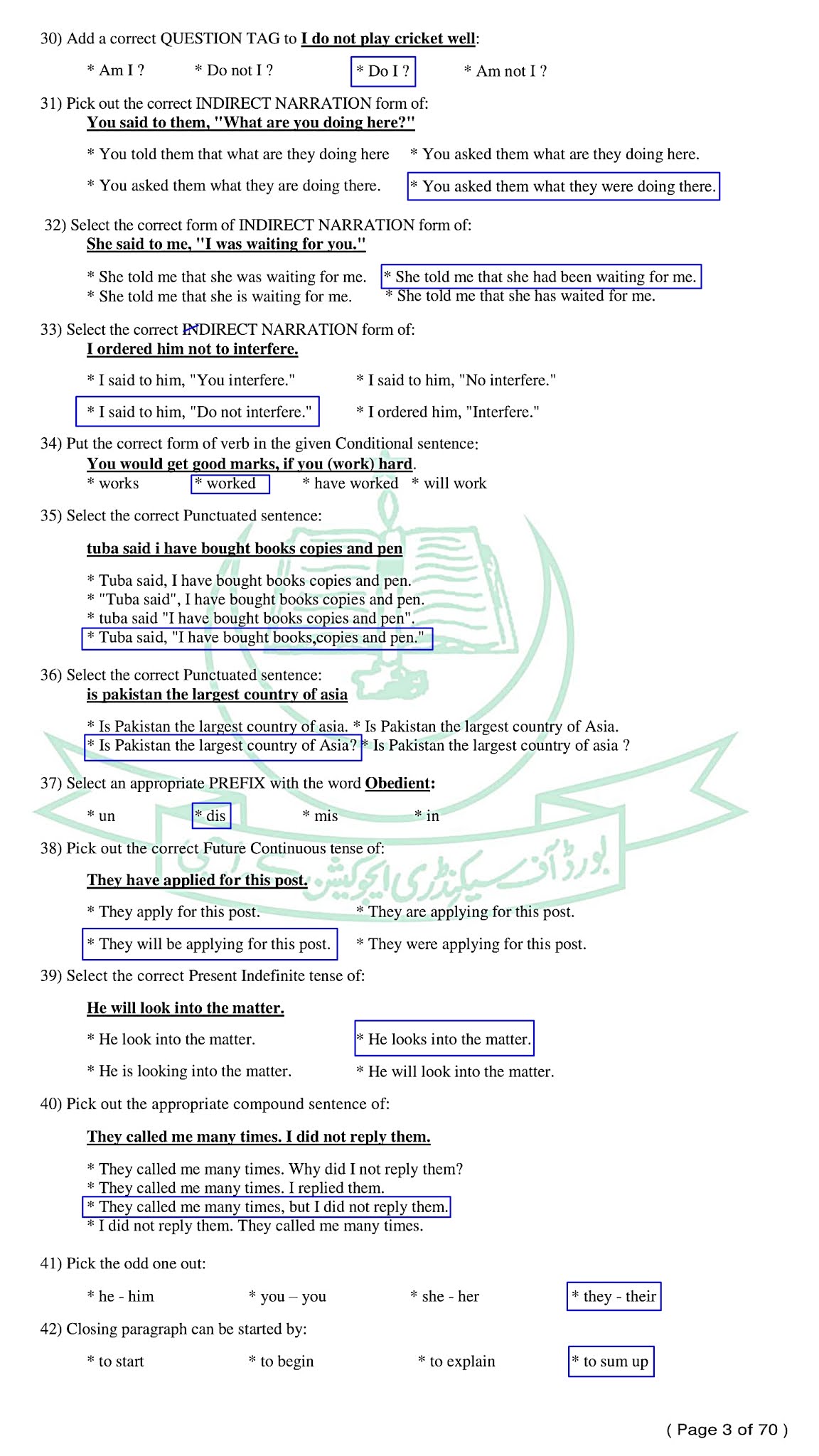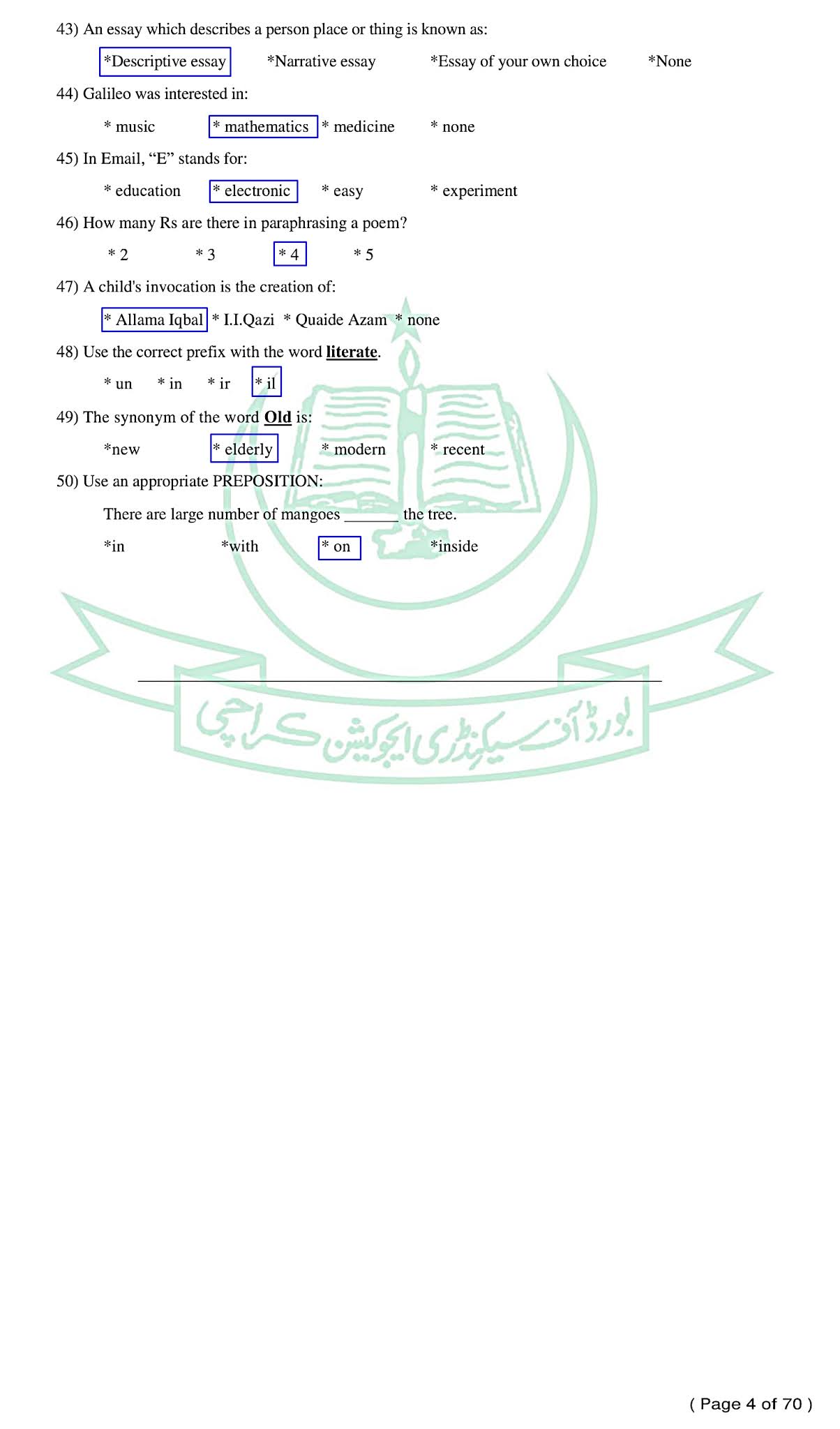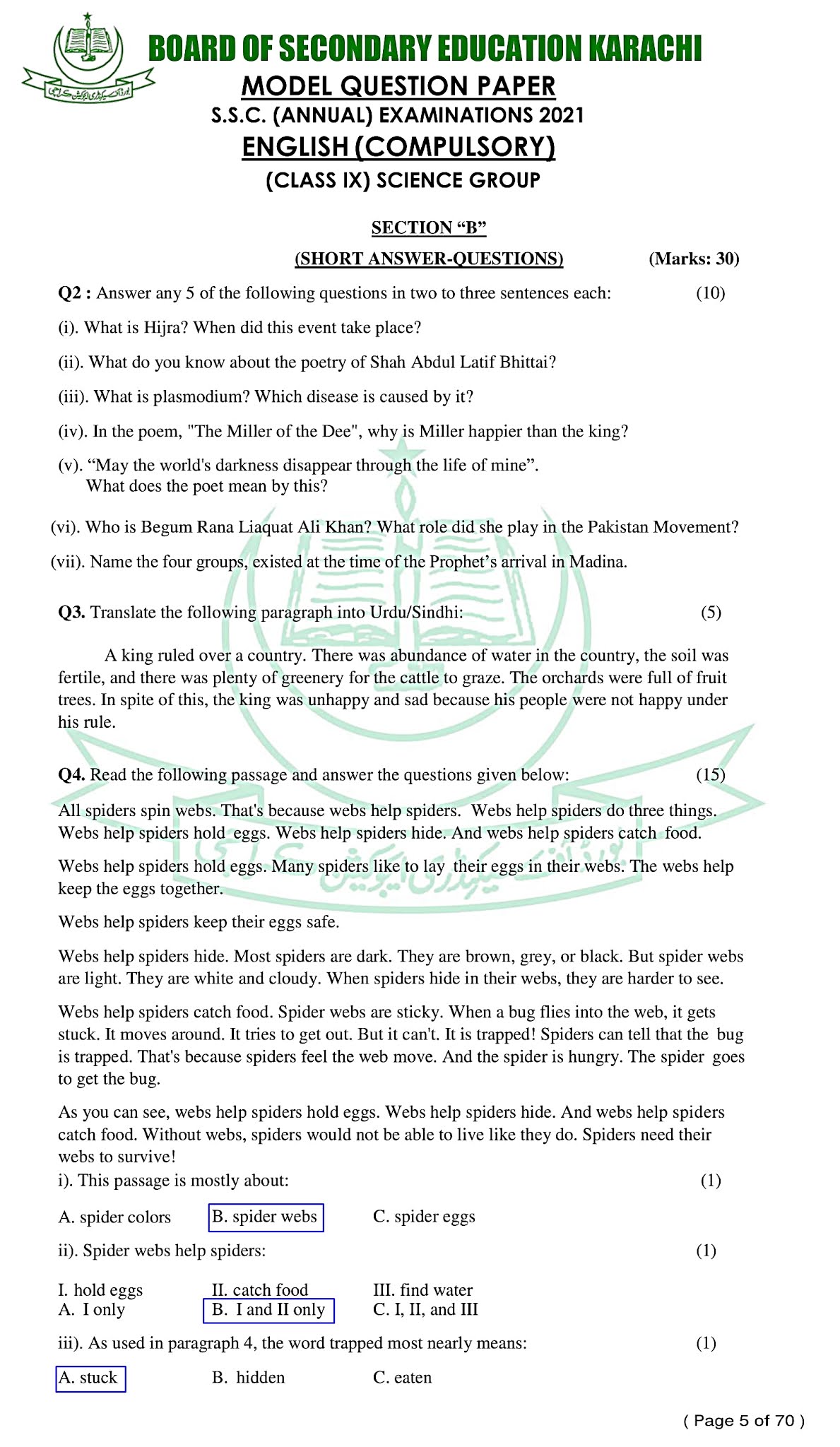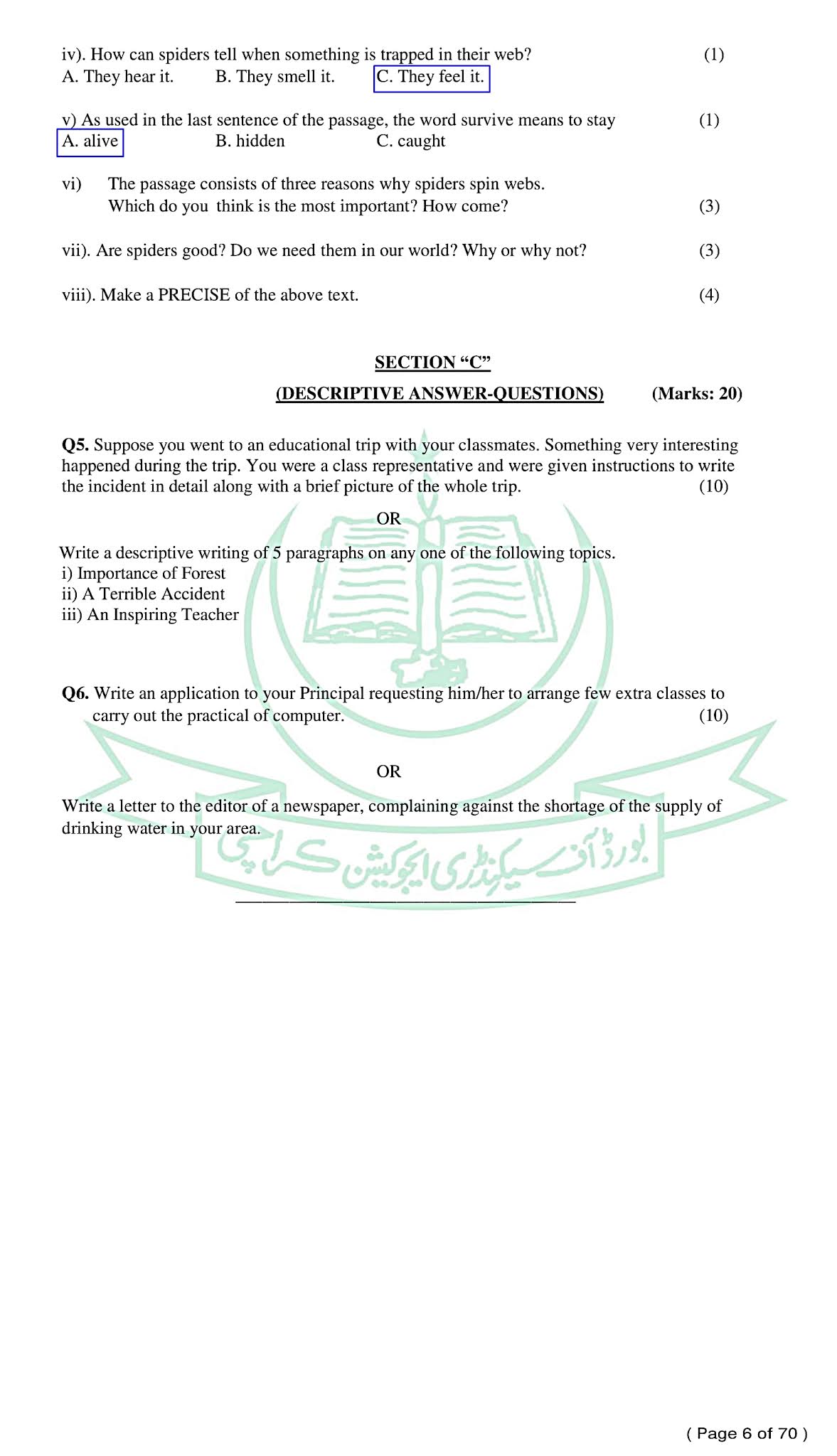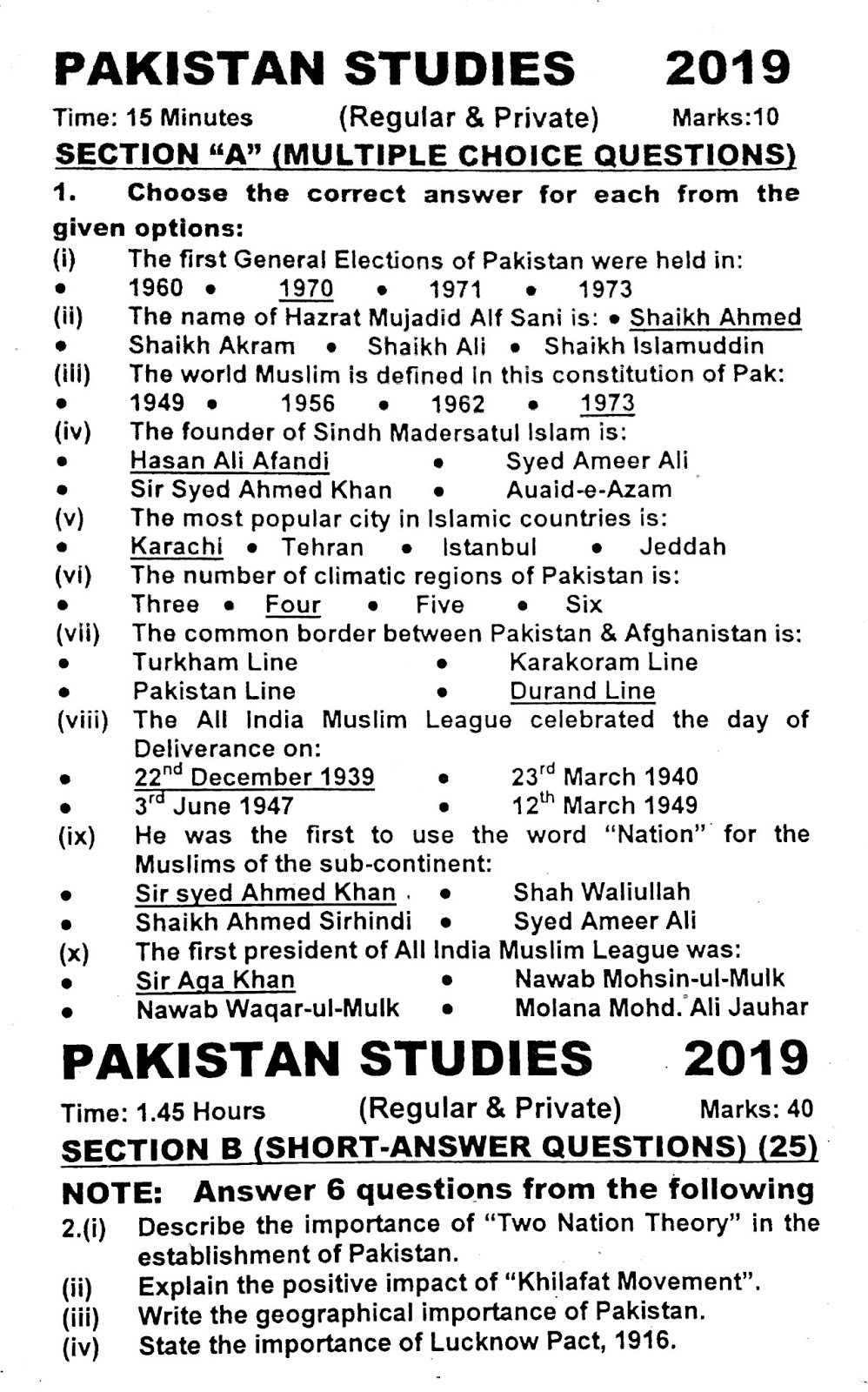GO TO INDEX
Physics (English)
For Class SSC - Part 1 (Science Groups)
Solved Model papers 2020 - 2021
As Per condensed Syllabus
SECTION "B" (SHORT ANSWER QUESTIONS) (Marks:18)
Note: Answer any Six (06) questions from this part.Q.2: Write down the importance of physics in our daily life.
Ans: Importance or application of Physics:
- Automobile technology such as buses, cars, railway carriages and aeroplanes etc., are based on the principles of the thermodynamics.
- Laser technology is widely used in medical science, defence system, metallurgy and astronomy, which has its roots in atomic physics.
- Electric power is also produce from nuclear energy which is produced by principles of nuclear physics, used in many countries including Pakistan.
- All the electrical devices which are used as home appliance (electric fan, electric bulb and refrigerator etc) are based on physics rules and laws.
- Radar technology is based on the rules of Physics.
- All the electronic devices such as radio, television, computer etc., are also based on physics rules and laws.
Q.3: Derive a relation between power and velocity?
Ans: Relation Between Power and Velocity:
Suppose a constant force "F" acts on a body and displaces it through distance "d" in the direction of force in time "t".
The work done is W = (F) (d) = Fd and
Average power developed is:
Q.4: Define equilibrium and state two conditions of equilibrium.
Ans:EQUILIBRIUM:
A body said to be in equilibrium if the forces acting on it must be cancel the effect of each other.
“OR”
When two or more forces act on a body, such that their resultant effect on the body is zero and the body retains its state of rest or of uniform motion then the body is said to be in equilibrium.Example: A book lying on the table. All forces which are acting are zero.
CONDITION OF EQUILIBRIUM
1. First Condition Of Equilibrium:
The sum of all the forces acting along X- axis is zero the sum of all forces acting along Y-axis is zero.
On X-aix: If the sum of all forces acting on the body along x-axis.
∑F = 0
F1x+ F2x = F3x+ F4x
∑Fx = 0
F1x+ F2x = F3x+ F4x
∑Fx = 0
On Y-axis: If the sum of all forces acting on the body along y-axis.
∑F = 0
F1y+ F2y = F3y+ F4y
∑Fy = 0
F1y+ F2y = F3y+ F4y
∑Fy = 0
2. Second Condition Of Equilibrium:
he sum of all torque acting on a body is always equal to zero.
Clockwise = anticlockwise
τ1 + τ2 = τ3 + τ4
∑ τ = 0
τ1 + τ2 = τ3 + τ4
∑ τ = 0
Q.5: Define measurement? Which is more accurate vernier calliper or screw gauge and why?
Ans: MEASUREMENT:
The meaning of measurement is the comparison of an unknown quantity with a standard, to see how many times it is big or small as compared to the standard.
OR
The following information about a body or an event is called Measurement.Size and nature of a body is described with a scale.
A clock describes an event.
Hence the reading will give the scale or clock about a body or an event is known as Measurement.
Screw Gauge Is More Accurate Than Vernier Calliper:
As compare to Vernier calipers, screw gauge is more accurate because the least count of Vernier calipers is 0.1 mm and for screw gauge it is 0.01 mm. So, a screw gauge can measure more accurately than a Vernier caliper. It can only be used to measure small objects.
Q.6: Write three point of difference between
- Mass and Weight
- Heat and Temperature
| S.No. | MASS | WEIGHT |
|---|---|---|
| 1. | The quantity of a matter present in a body is called mass. | The force with which earth attracts the body towards its center is called weight. |
| 2. | Mass has no direction so it is scalar quantity. | Weight always directed downward towards the center of the earth so it is vector quantity. |
| 3. | The mass of a body remain constant | The weight of the body does not remain constant. It is different at different altitude of earth g ∝ 1 / rg2. g = acceleration due to gravity. rg = Radius of earth |
| 4. | Its SI unit is kilogram (Kg). | Its SI unit is Newton (N). |
| 5. | Mass is the measure of inertia. | It is the measurement of gravitational force between the earth and the body. |
| 6. | Its formula is m = F / a. | Its formula is W = mg. |
| 7. | Mass can be determined by ordinary or physical balance. | Weight can be determined by a spring balance. |
| 8. | Mass remain constant at the surface and at the center of the earth | Weight of a body becomes zero at the center of the earth. |
| 9 | It is a universal constant. | It depends upon the height. |
(Note: Do any three difference as mentioned in question)
Difference Between Heat And Temperature
| S.No. | HEAT | TEMPERATURE |
|---|---|---|
| 1. | Heat is a form of energy that can be transferred from one body to another | Temperature shows the degree of hotness and coldness of a body. |
| 2. | Total kinetic enrgy of a molecule is termed as heat, | Average kinetic energy of molecules of a substance is termed as a temperature |
| 3. | The S.I unit of heat is Joule or calorie. | The S.I unit of temperature is Kelvin. |
| 4. | The unit of heat is Joule or calorie. | The unit of temperature are Celsius, Fahrenheit and absolute or Kelvin. |
| 5. | It flows from high level to low level. | Temperature shows the direction of flow of heat. |
| 6. | Heat energy is measured by calorimeter. | Temperature is measured by thermometer |
(Note: Do any three difference as mentioned in question)
Q.7: Find the acceleration of a body whose velocity increases from 11 m/s to 33 m/s in 10s.
SOLUTION:
Given Data:
Initial Velociry: vi = 11 m/s
Final Velocity: vf = 33 m/s
Tim taken: t = 10 s
Required data:
Acceleration of the body:
a = ?
Formula:
Q.8: Find the two rectangular component of a force of 100 N which is acting at angle of 30° with x-axis.
SOLUTION:
Given Data:
Force = 100 N
Angle = 30°
Required Data:-
Horizontal component Fx = ?
Vertical component Fy = ?
For horizontal component
Fx = F cos θ
Fx = 100 cos 30°
Fx = 100 x 0.866
Fx = 86.60 N Ans.
For vertical component
Fy = F sin θ
Fy = 100 sin 30°
Fy = 100 x 0.5
Fy = 50 N Ans.
Ans: Horizontal component is 86.60 N and Vertical component is 50 N
Q.9: A string 2 m long used to whirl a 200 gm stone in horizontal circle at a speed of 2 m/s. Find the tension in the string.
Q.10: Find the pressure exerted by a 450 N woman putting all her weight on to one heel of area 2 cm x 2 cm.
SOLUTION
Given Date:-
Force F = 450 N
Area A = 2 cm x 2 cm = 4 cm2
Required Data:
Pressure = ?
Formula:-
P = F / A
P = 450 / 4
P = 112.5 N/cm2 Ans
Q.11: A force is applied perpendicularly on a door 400 cm wide which required a torque of 1200 N-m to open it. What will be the minimum force required.
SOLUTION:
Given Data:-
Moment arm = d = 400 cm x 1 / 100 = 4m
Torque = τ = 1200 N-m
Required Data:-
Force = ?
Formula:-
τ = F x d
F = τ / d
F = 1200 / 4
F = 300 N Ans.
SECTION "C" (DESCRIPTIVE ANSWER QUESTIONS) (Marks:12)
Note: Answer any Two (02) questions from this section. All questions carry equal marks.Q.12: Derive the equation vf2 = vi2 + 2as
Ans: Vf2 = Vi2 + 2as
Consider a body is moving with initial velocity “Vi” with uniform acceleration “a”. After certain interval of time “t”, its final velocity becomes “Vf”. During such duration ii covered distance “s” with uniform acceleration “a”.
Mathematically:
Or
vf2 = vi2 + 2as
Q.13: States Law of Universal Gravitation and Determine the mass of Earth using Law of Gravitation
Ans: NEWTON'S LAW OF UNIVERSAL GRAVITATION:
“Everybody in the universe attracts every other body with a force which is directly proportional to the product of their masses and inversely proportional to the square root of the distance between their centers”.
MASS OF EARTH USING LAW OF GRAVITATION:
The mass of earth can be determined with the help of Newton’s law of gravitation.
Consider a body of mass “m” placed on the surface of earth. If “Me” be the mass of the earth and “Re” its radius than the force with which the earth attracts the body towards its center is given by equation:
Q.13: Define Co-efficient of linear expansion. Also prove α = 1 ∕ 3β
Ans: Co-efficient Of Linear Expansion:
Fractional change in length per degree rise in temperature is called co-efficient of linear expansion.
α = Δt ∕ I1ΔT
OR
It is defined as " Increase in length per unit length per degree rise in temperature."In S.I. system the unit of coefficient of linear expansion is 1 ∕ k or K-1.
Relation Between Co-efficient Of Linear Thermal Expansion And Volumetric Thermal Expansion
α = 1 ∕ 3β
Suppose "l1", "b1" and "t1" be the length, breath and thickness respectively of the block before heating then the initial volume before heating is,
v1 = l1b1t1 -------- (i)
Suppose these quantities attain the value "l2", "b2", t2" after heating through ΔT. We now calculate the increase in length, breath and tickness of the block by considering its linear expansion along the three directions as,l1 = l1(1 + αΔT) ------- (ii)
b1 = b1(1 + αΔT) ------- (iii)
t1 = t1(1 + αΔT) ------- (iv)
By multiply eq. (ii), eq. (iii) and eq. (iv) we have,
l1b1t1 = l1(1 + αΔT) x b1(1 + αΔT) x t1(1 + αΔT)
∴ l1b1t1 = l1b1t1(1 + αΔT)3
v2 = v1(1 + αΔT)3
By using (a + b)3 = a3 + 3a2 b + 3ab2 + b3
v2 = v1(1 + 3α2ΔT + 3αΔT2 + α3ΔT3)
Since α is vry small, higher ordered term in α are neglected,
v2 = v1(1 + 3αΔT)
v2 = v1 + 3αΔTv1
v2 - v1 = 3αΔTv1 ------ (v)
But v2 - v1 = Δv
Therefore, eq. (v) becomesΔv = 3αΔTv1
Δv/ ΔTv1 = 3α
But we know thatβ = Δv/ ΔTv1
Hence β = 3α
or α = 1 ∕ 3β
Q.14: State Pascal's Law. Also decribe construction and working of hydraulic lift with the help of diagram.
Ans: Statement Of Pascal's Law:
"When the pressure is applied to a liquid, it is transmitted undiminished equally in all directions."
Hydraulic Lift:
Principle:
A hydraulic lift or jack works on the principle that a liquid transmits pressure equally in all direction.
Construction:
Hydraulic lift or jack consists of two cylinders, a smaller cylinder with cross sectional area A1 which is connected with a wider cylinder of cross sectional area A2. They are filled with air tight pistons. Cylinders are filled with some incomprehensible fluid.
Working:
According to the Pascal's law,
The small force F1, is applied to a piston of area A1. The pressure P on the piston is given by:
P = F1 ∕ A1 ---- (i)
This pressure is transmitted equally throughout the liquid. Thus an upward pressure of P is applied to the larger portion of area A2 which is greater than A1. Therefore the piston is capable of supporting a force.
F2 = P x A2
or
P = F2 ∕ A2 ---- (ii)
By comparing equation (i) and equation (ii) we have,
F1 ∕ A1 = F2 ∕ A2
F2 = F1 ∕ A1 x A2
Thus the applied force (F1) has been increased by a factor A2.
It is clear from the above equation F2 > F1, since A2 > A1. Thus a small force acting on small area
A2 generateas a large force F2 acting on a large area A2.
Hence a car placed on the moving piston which acts as platform is lifted.
